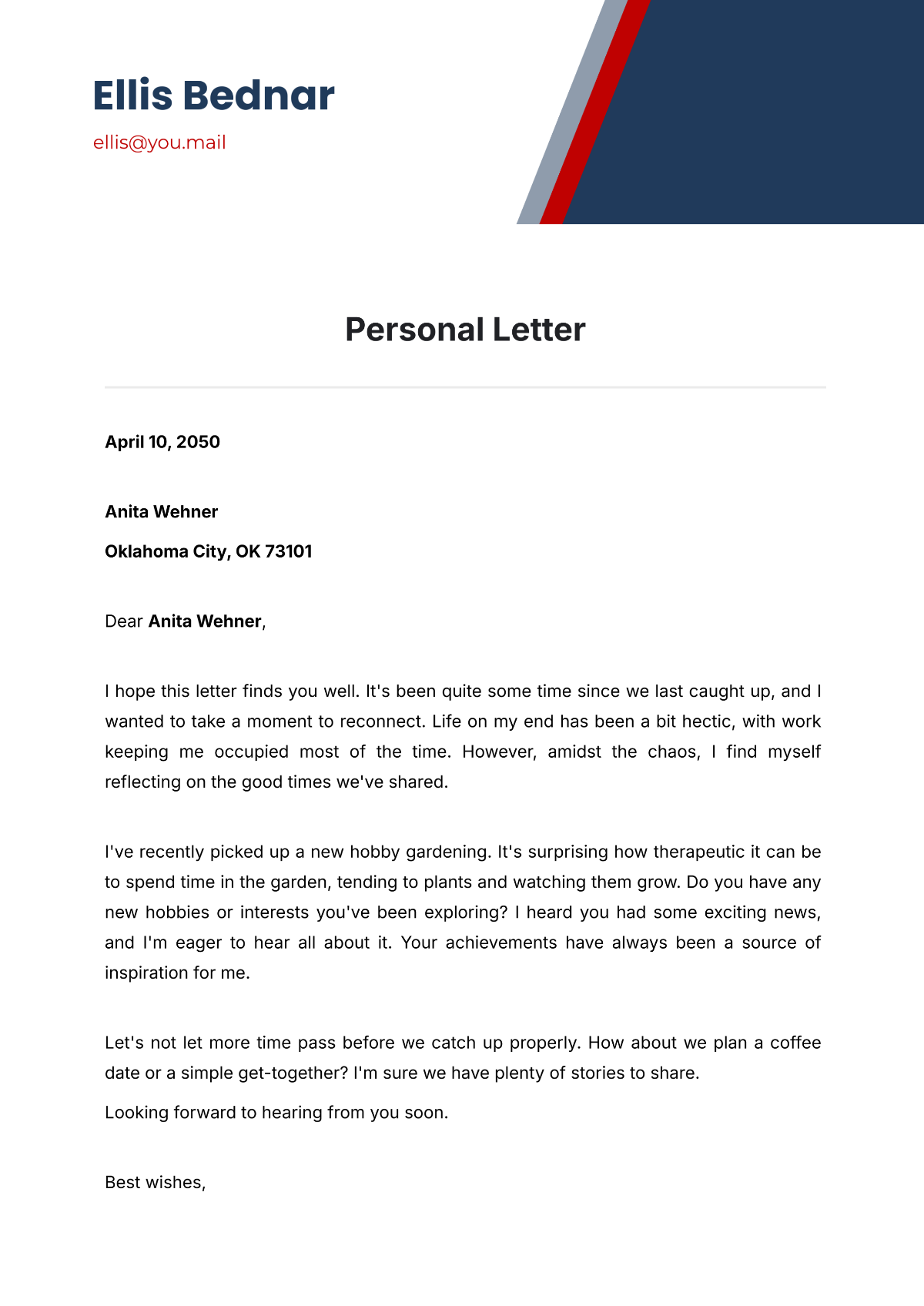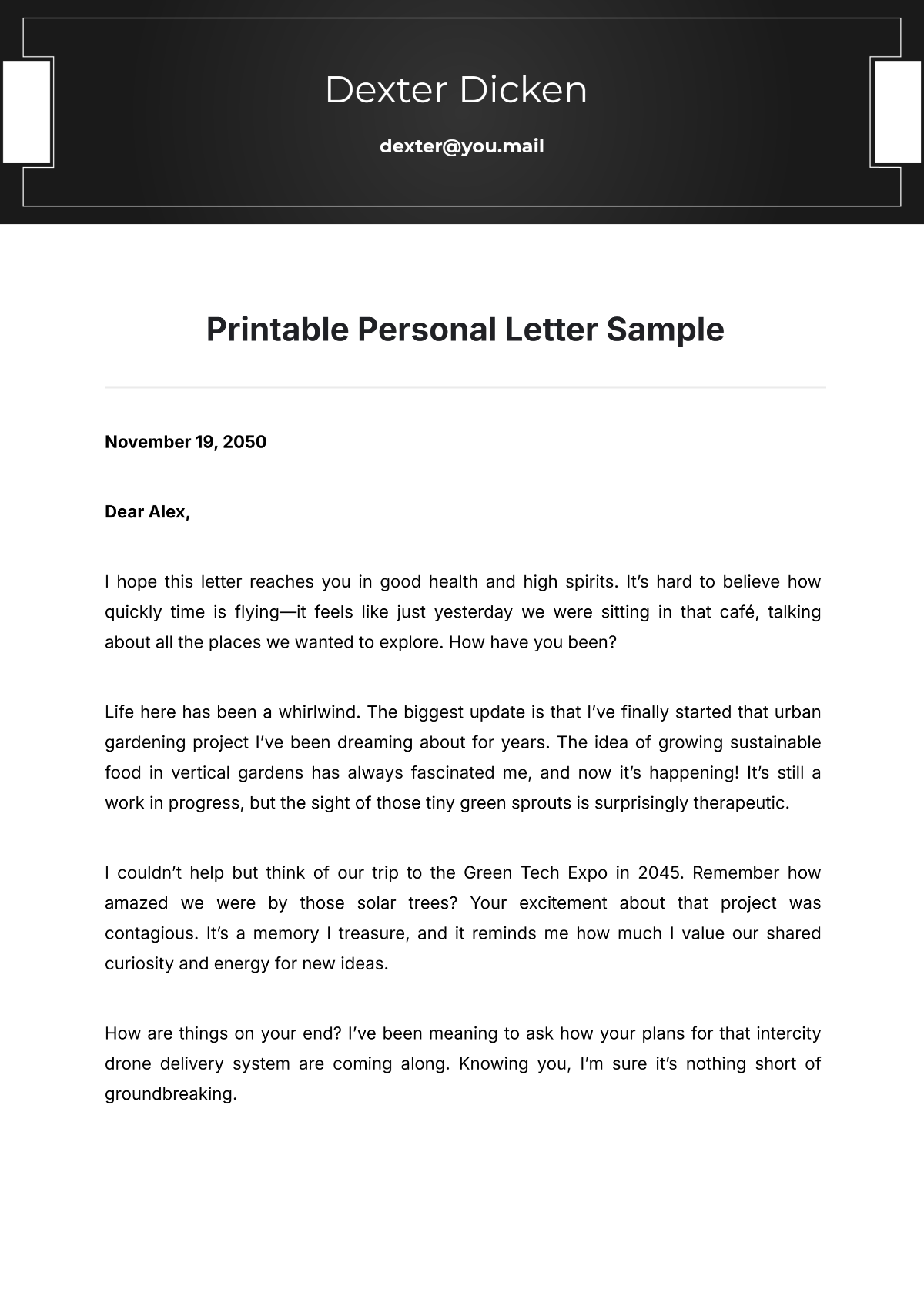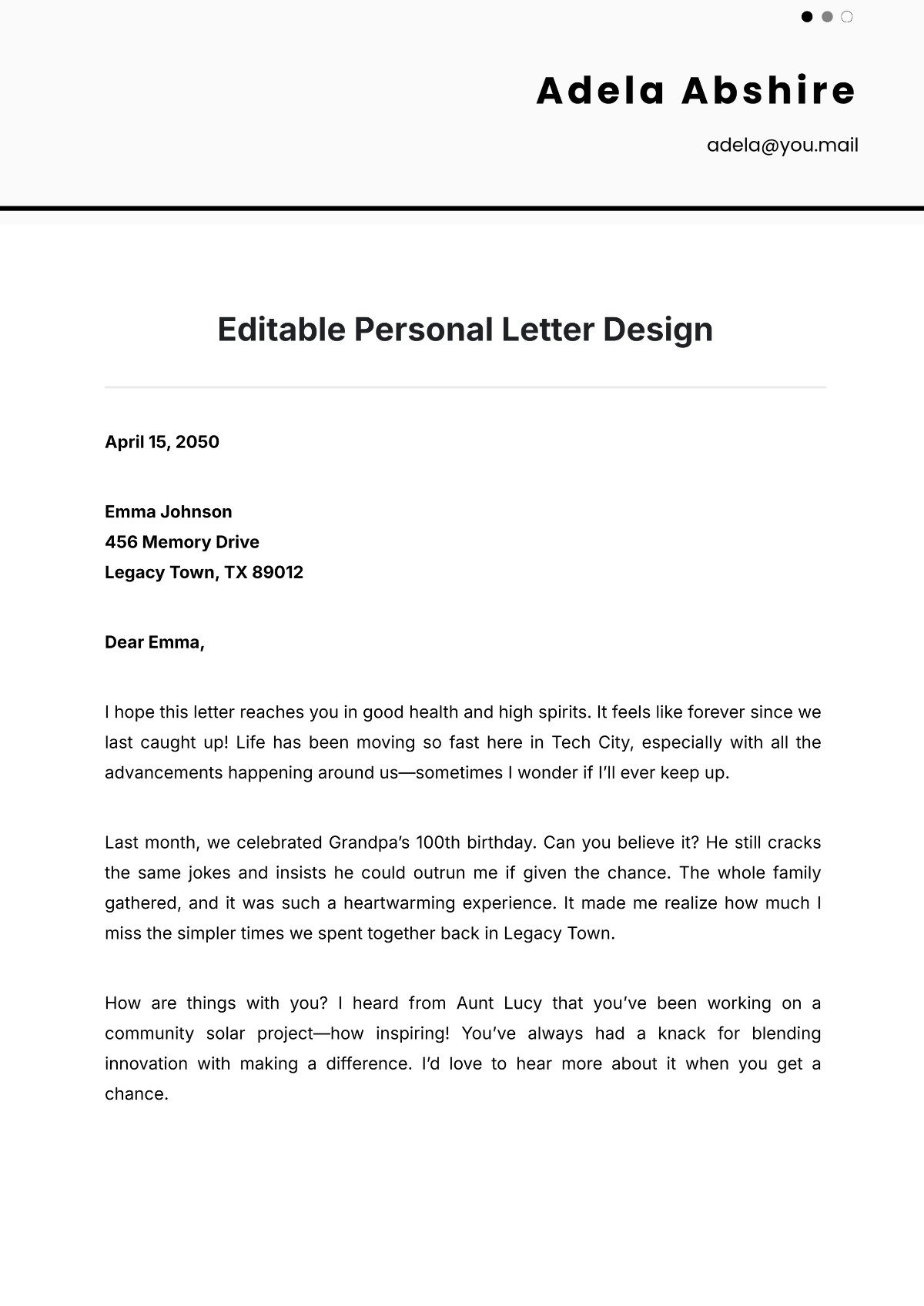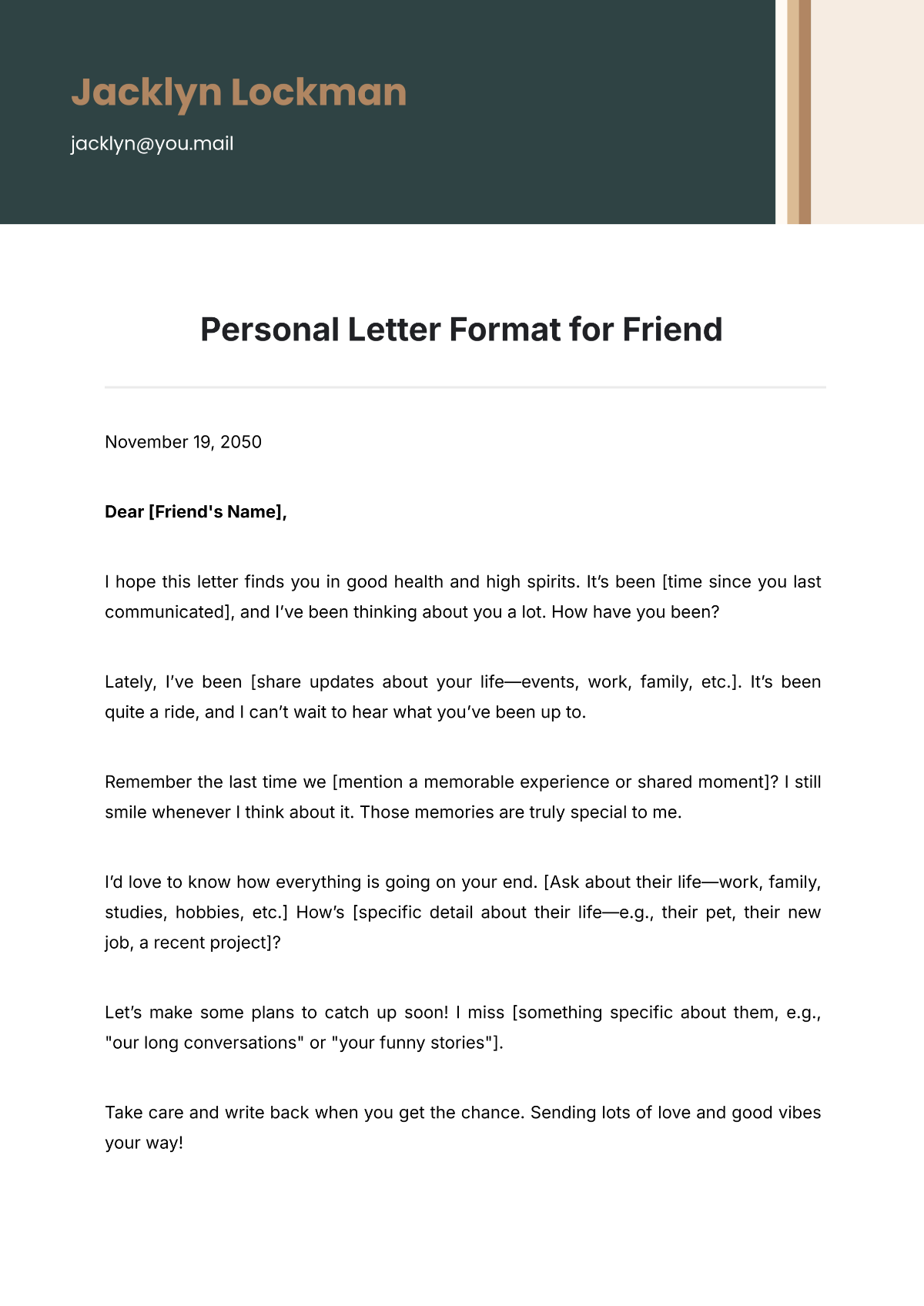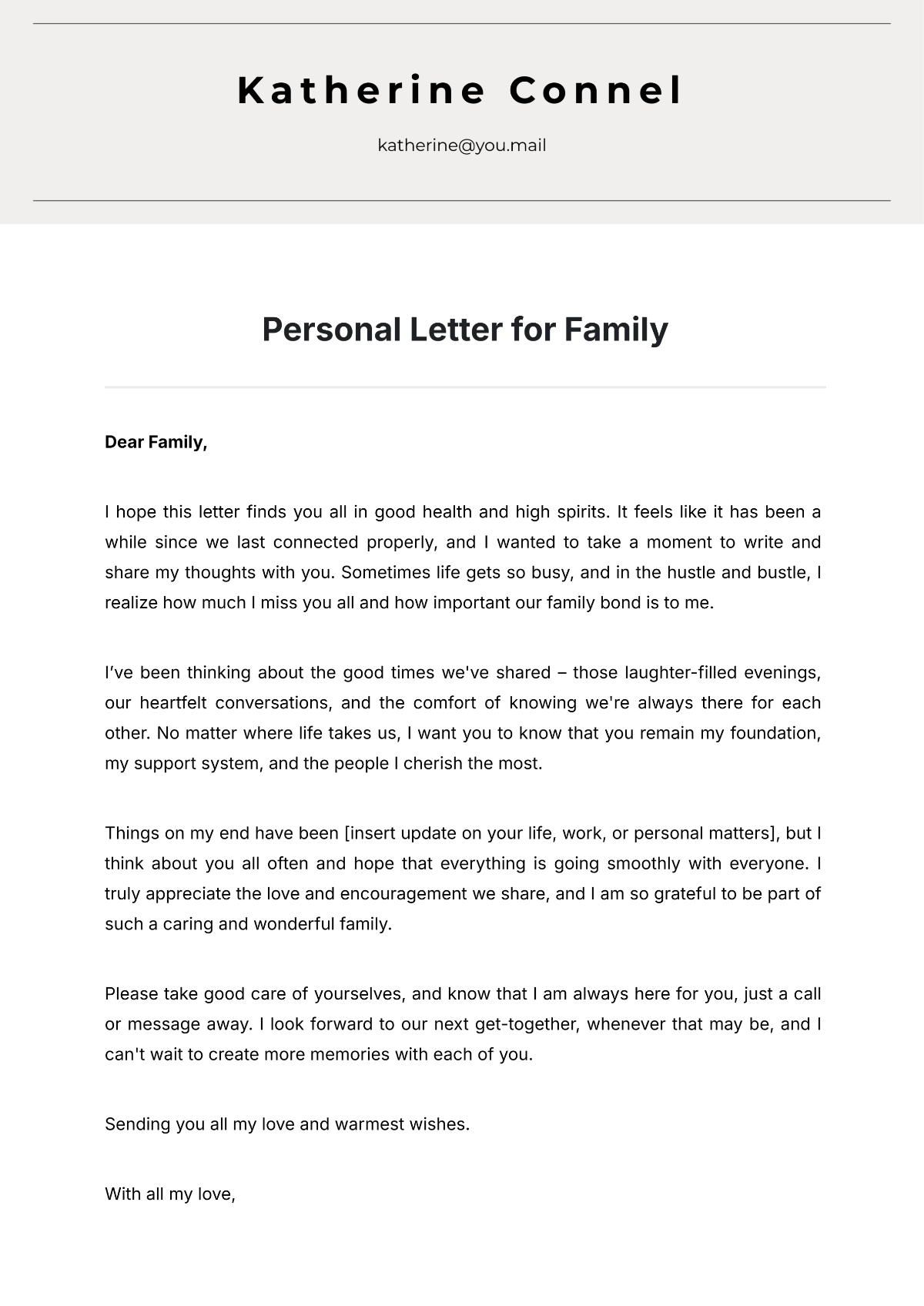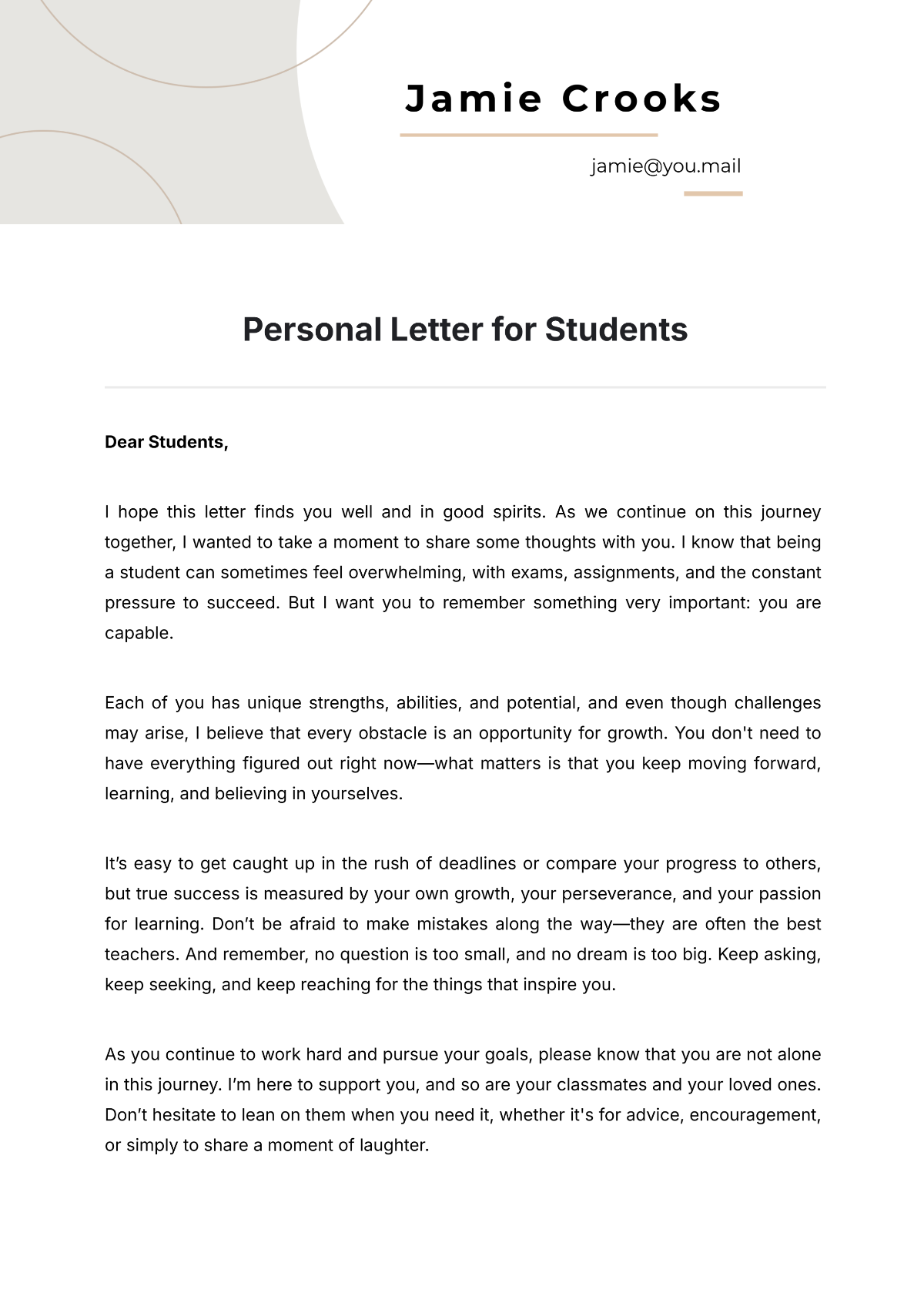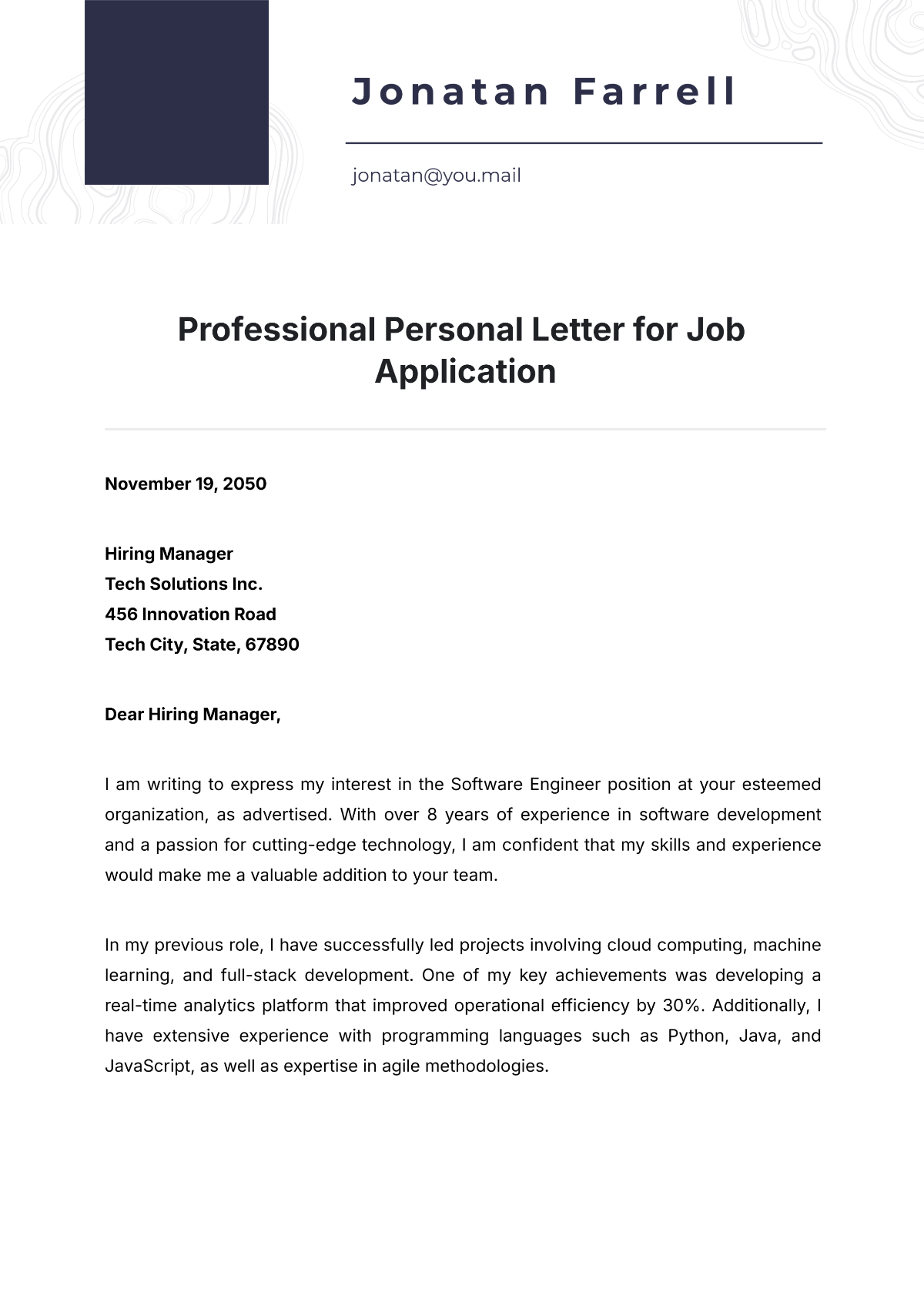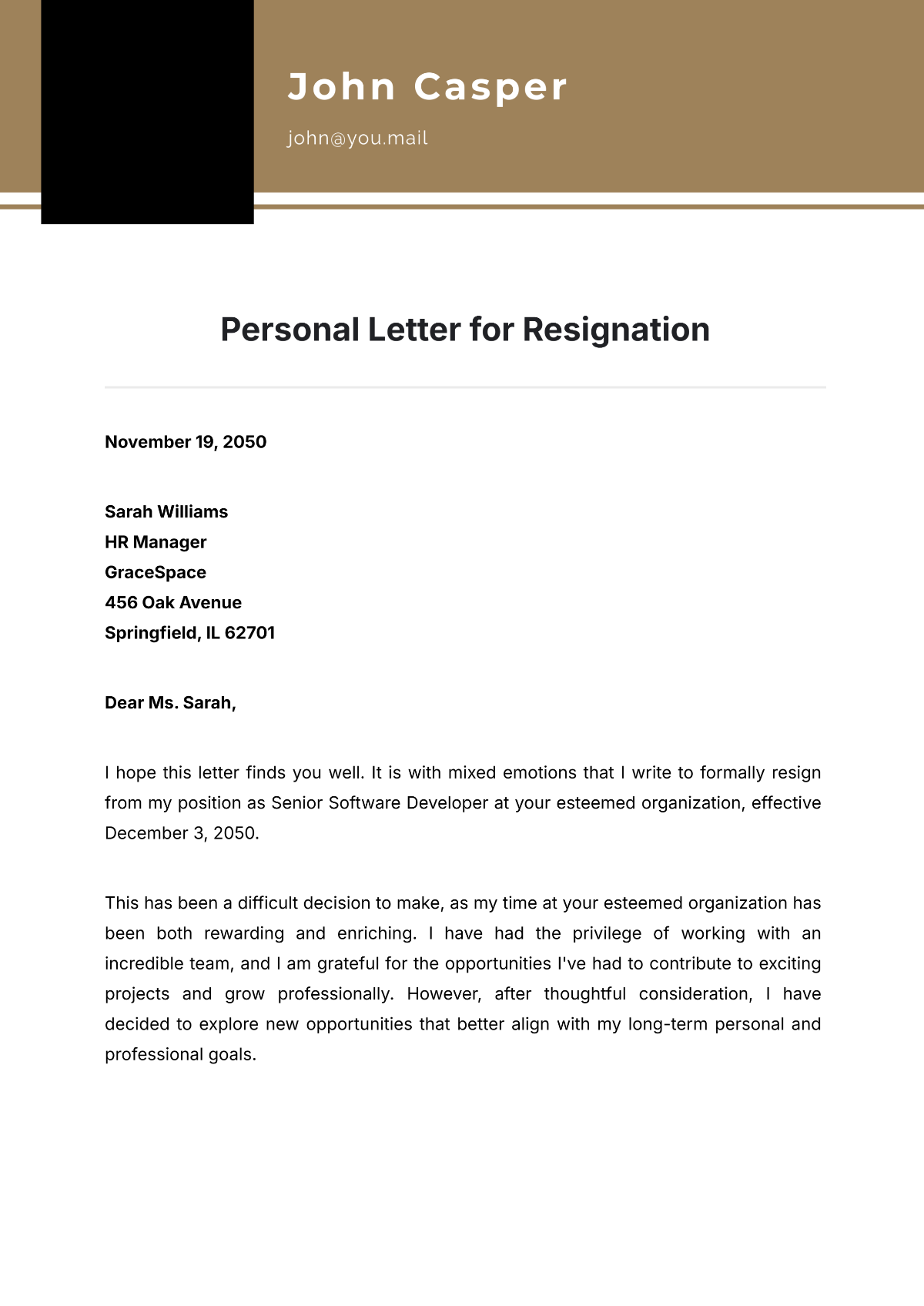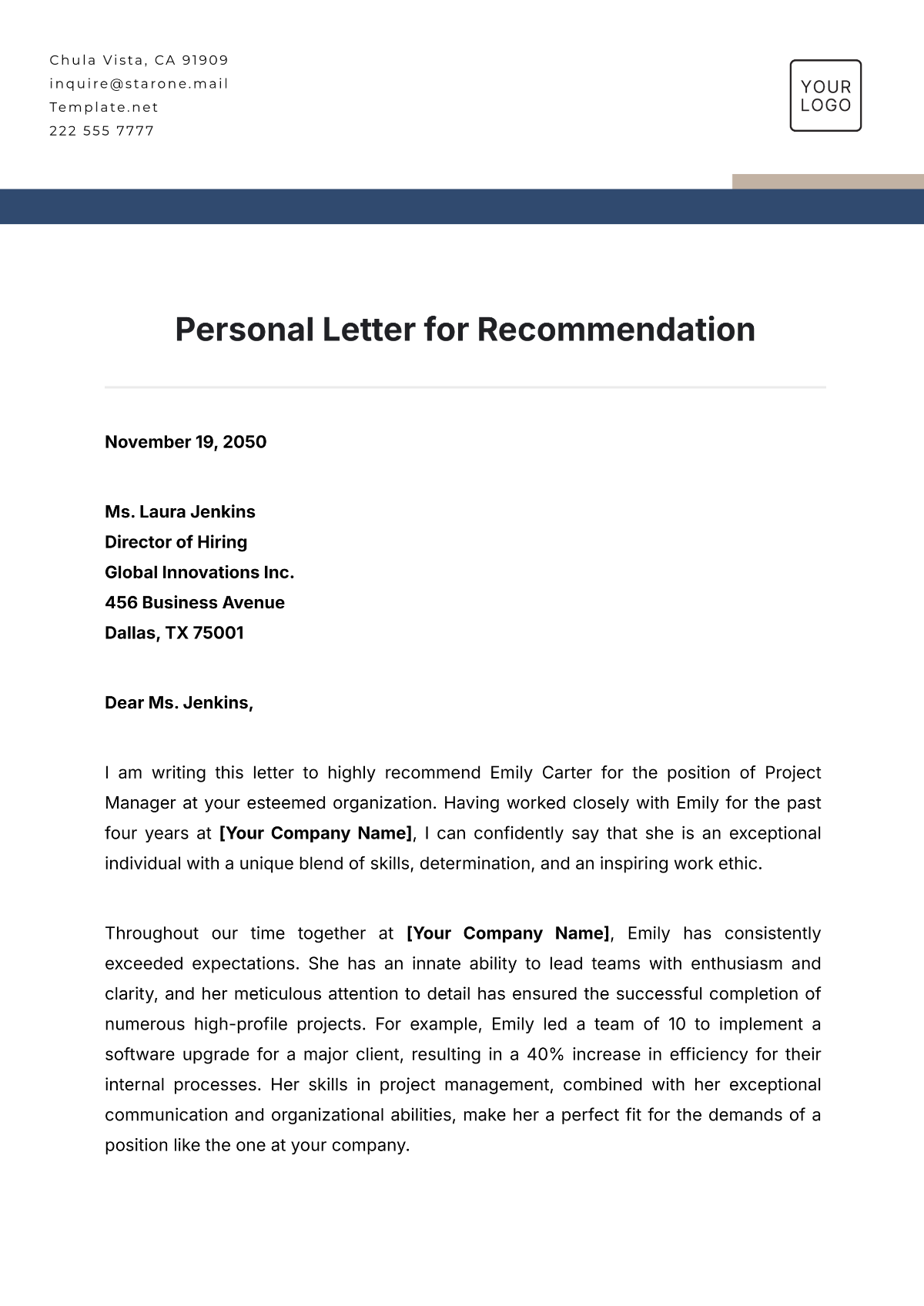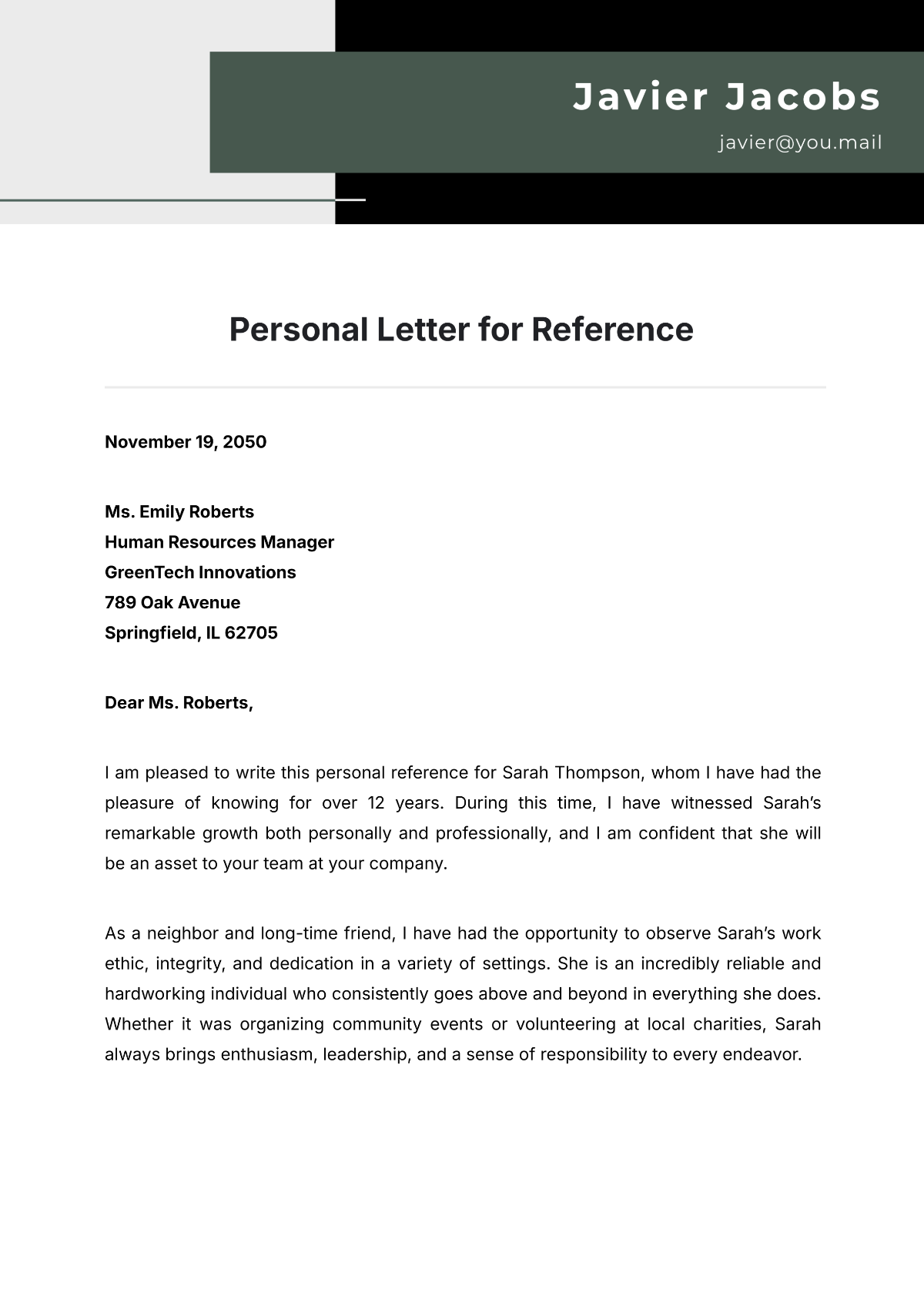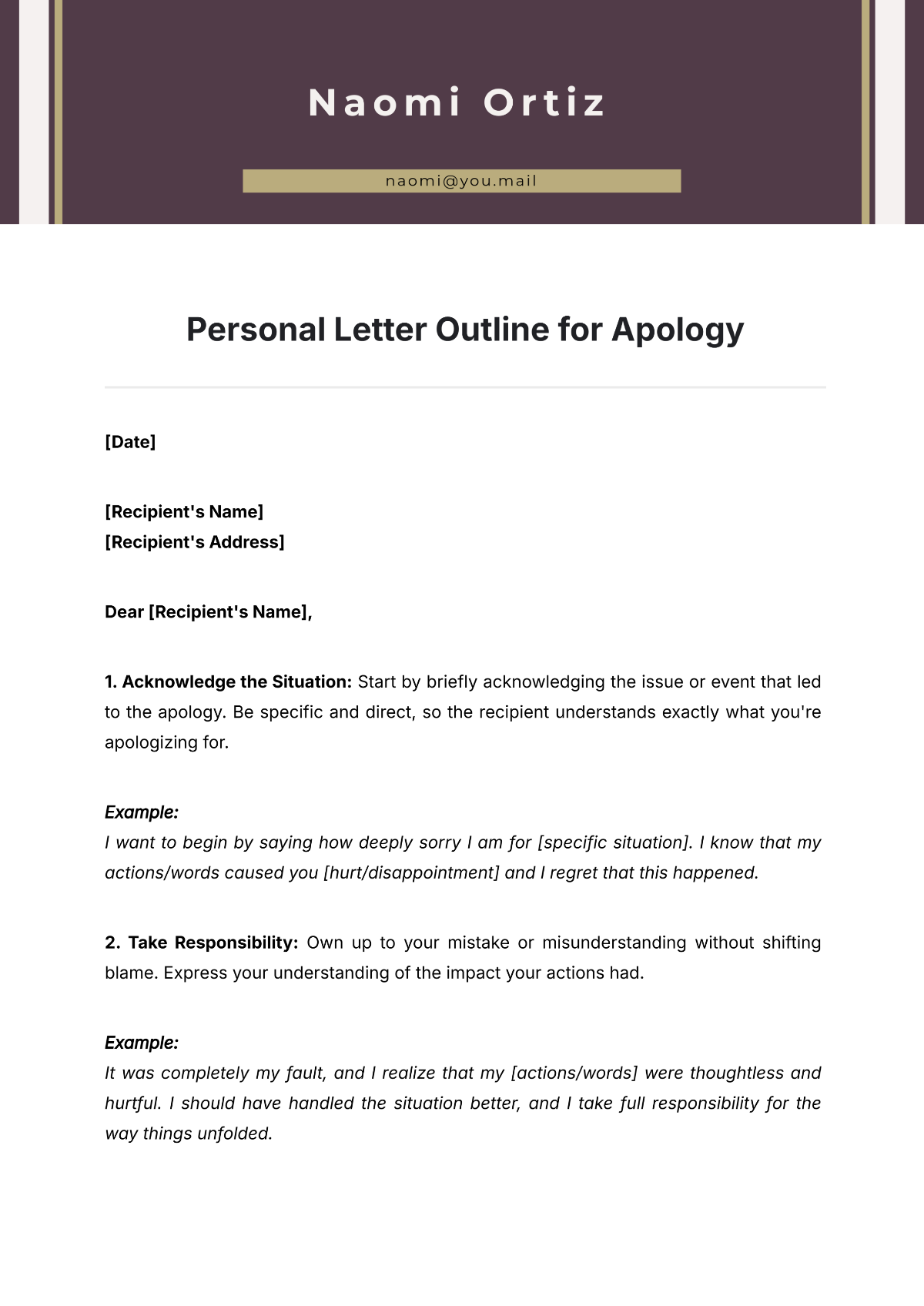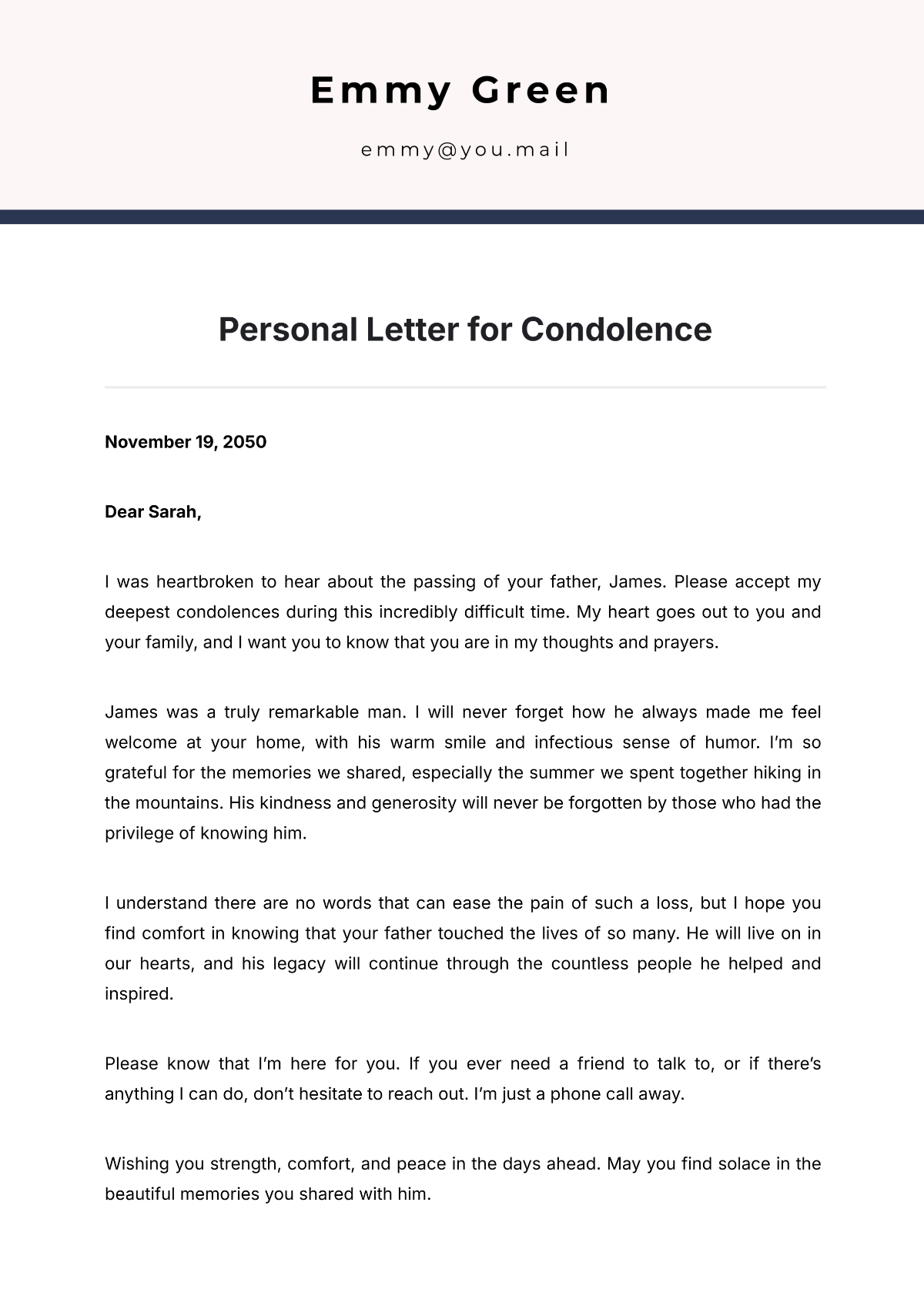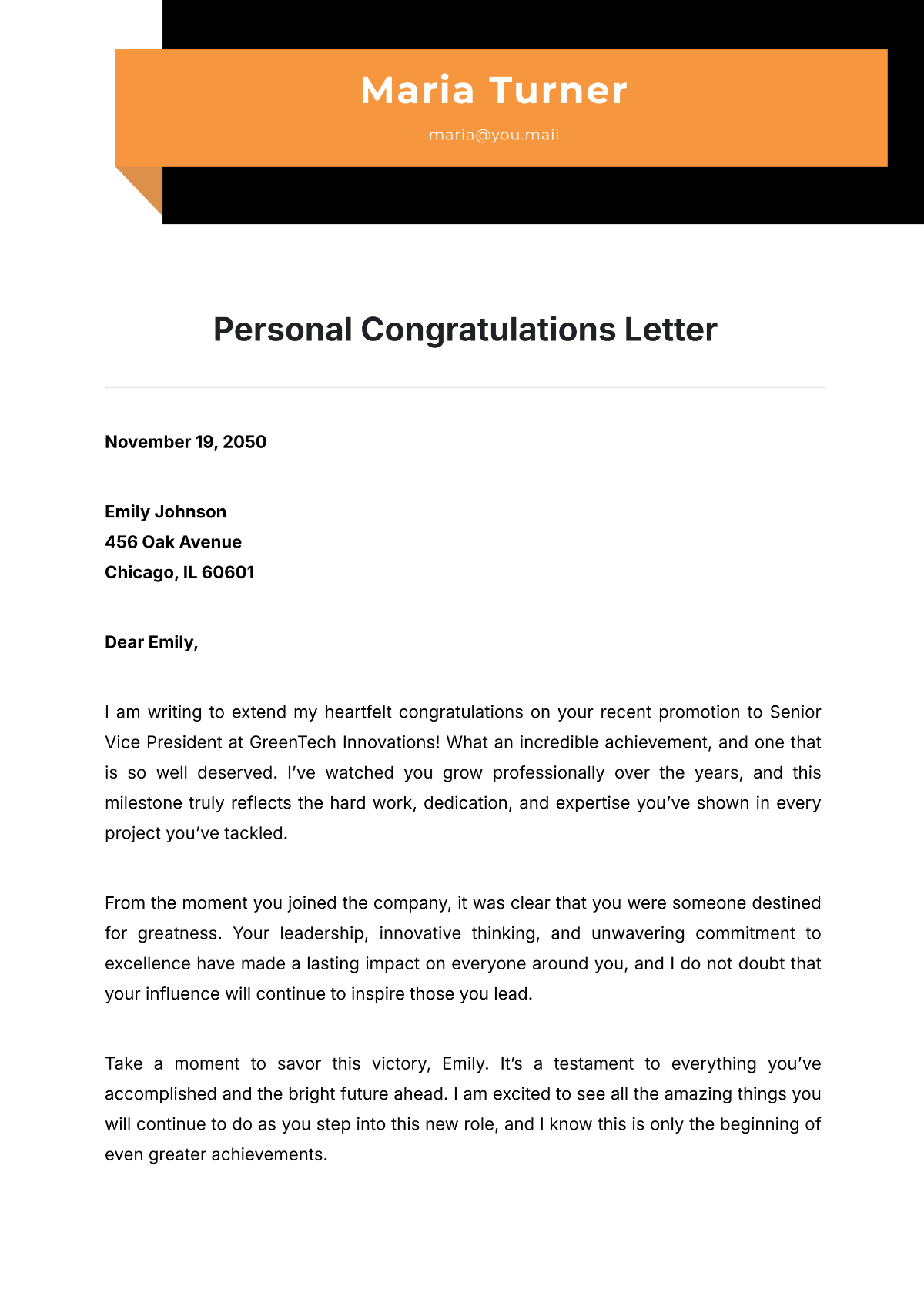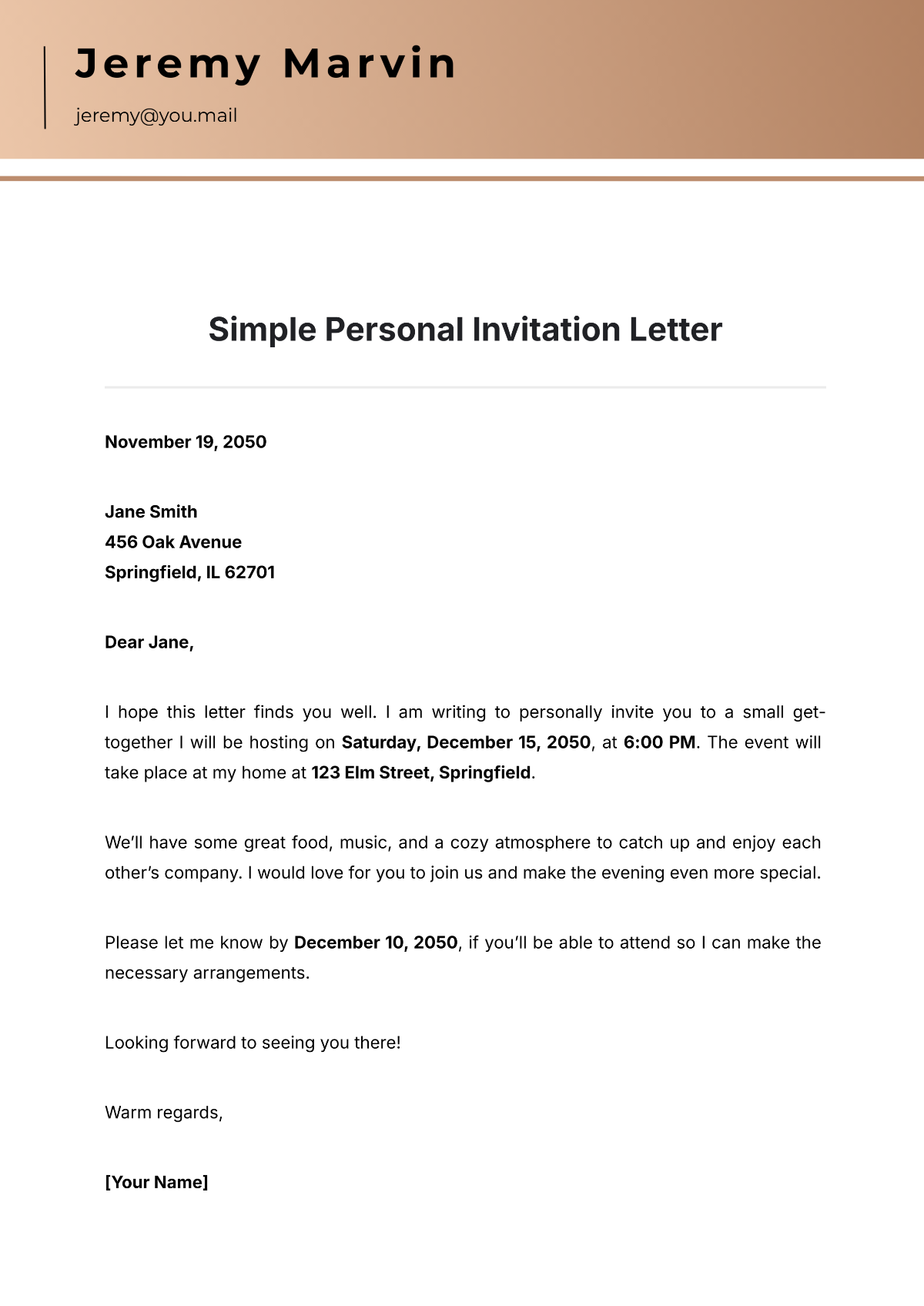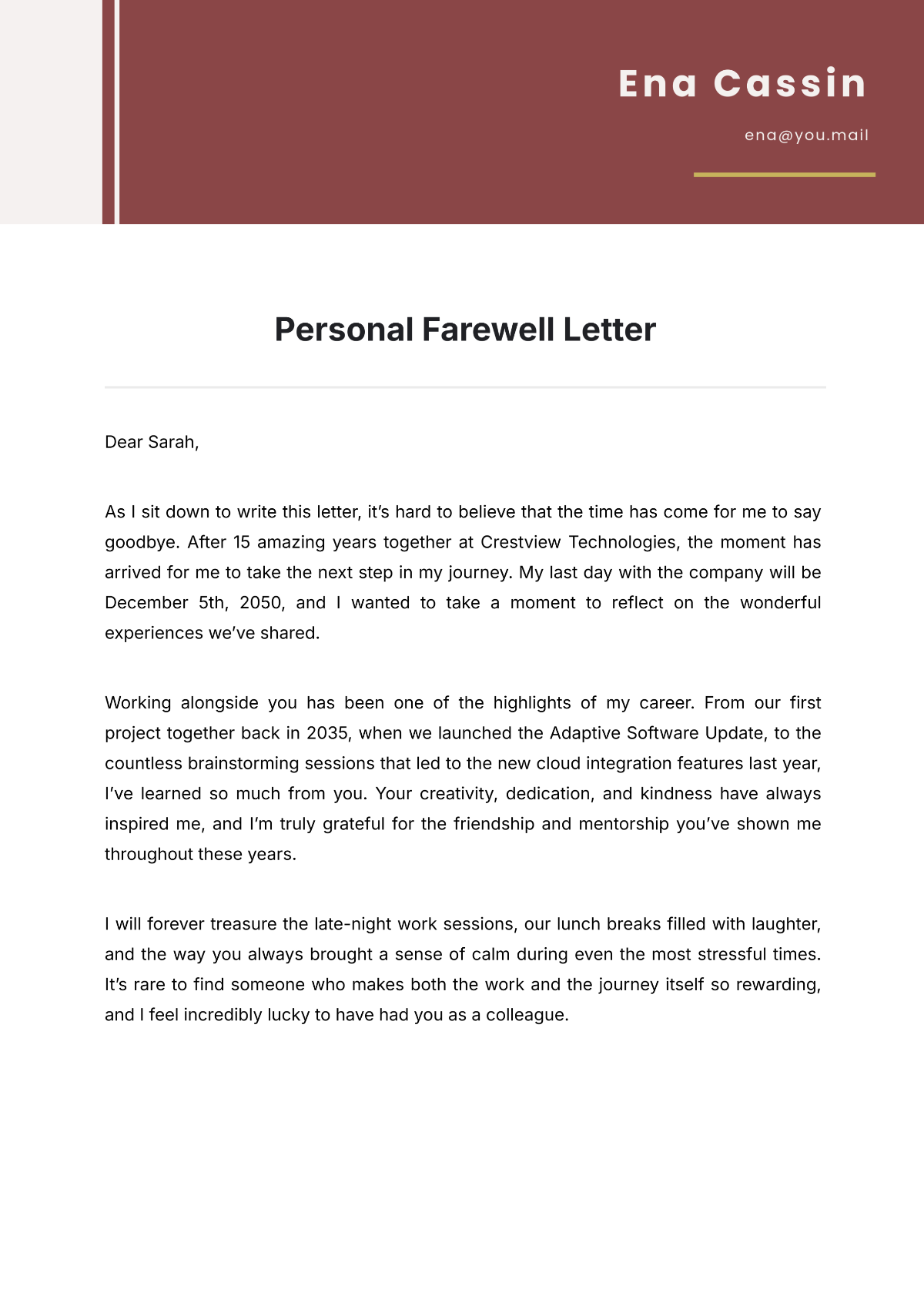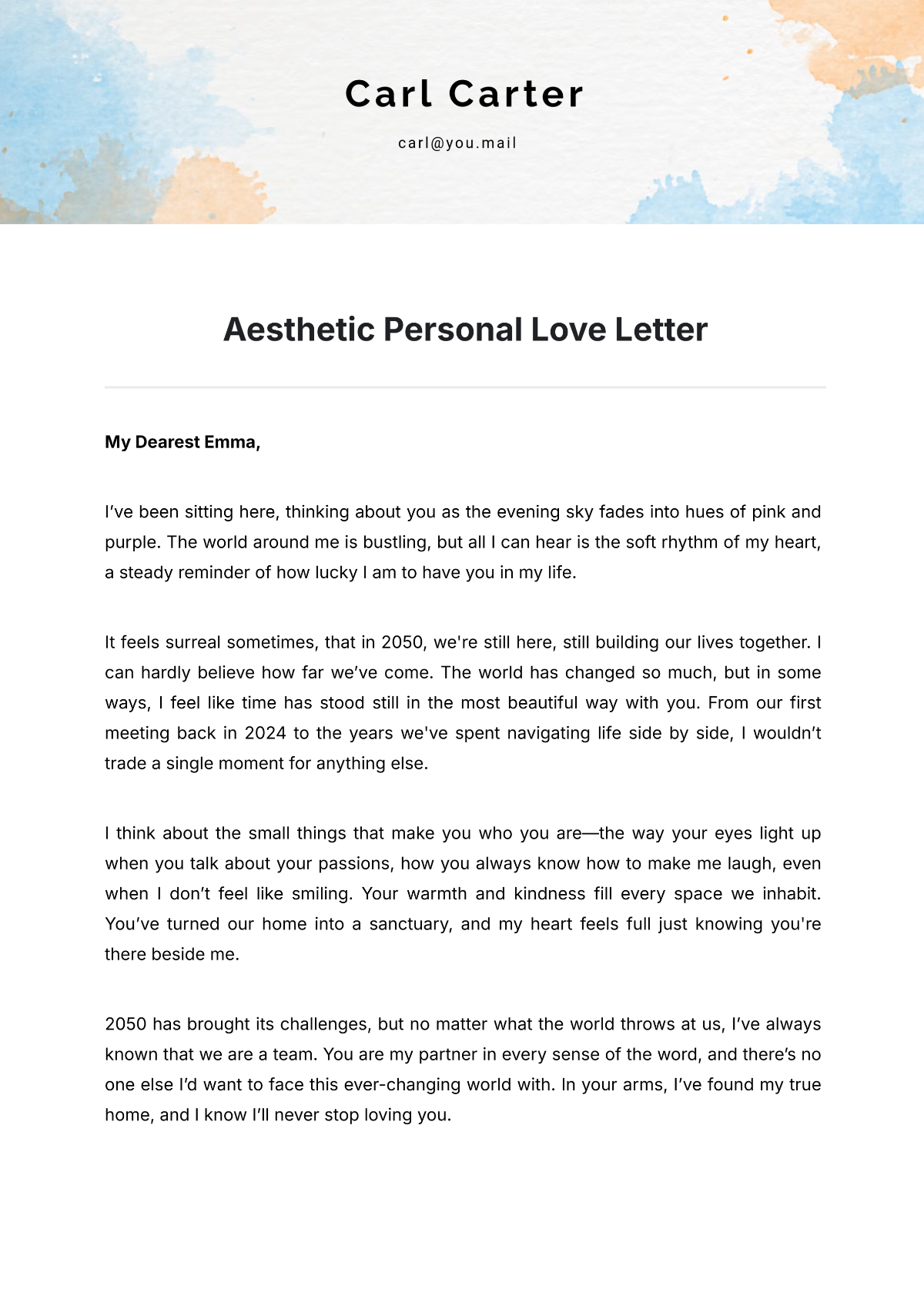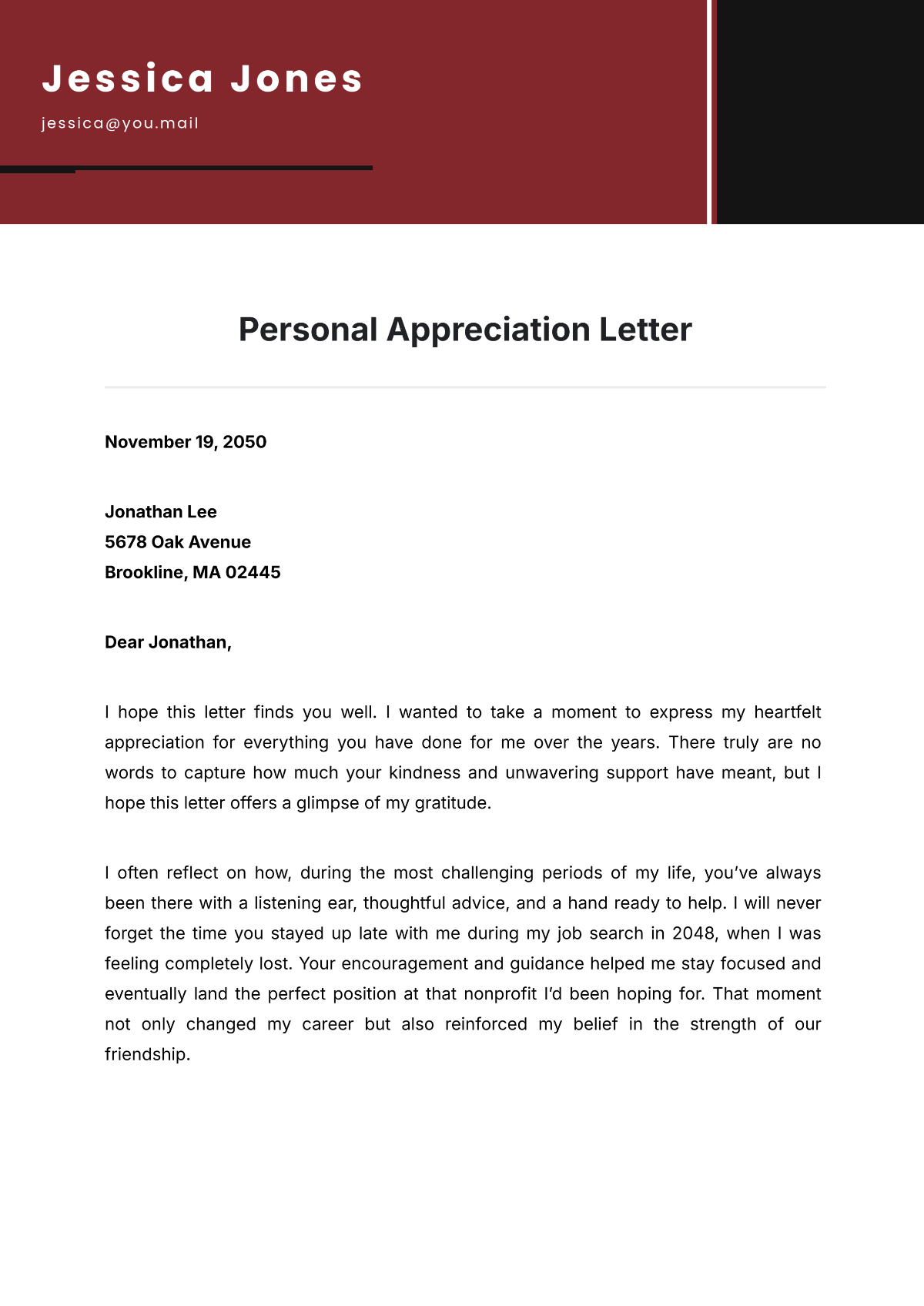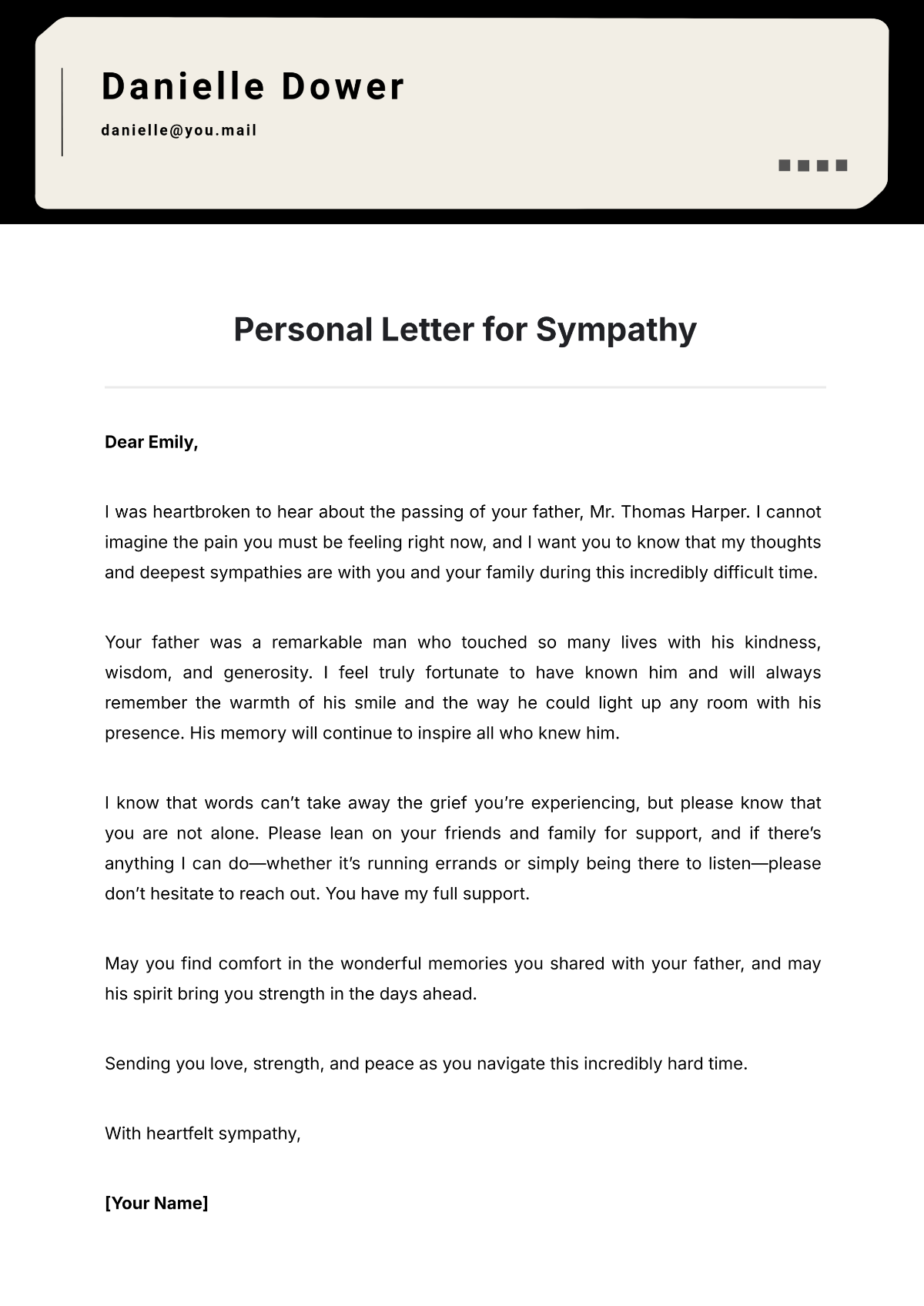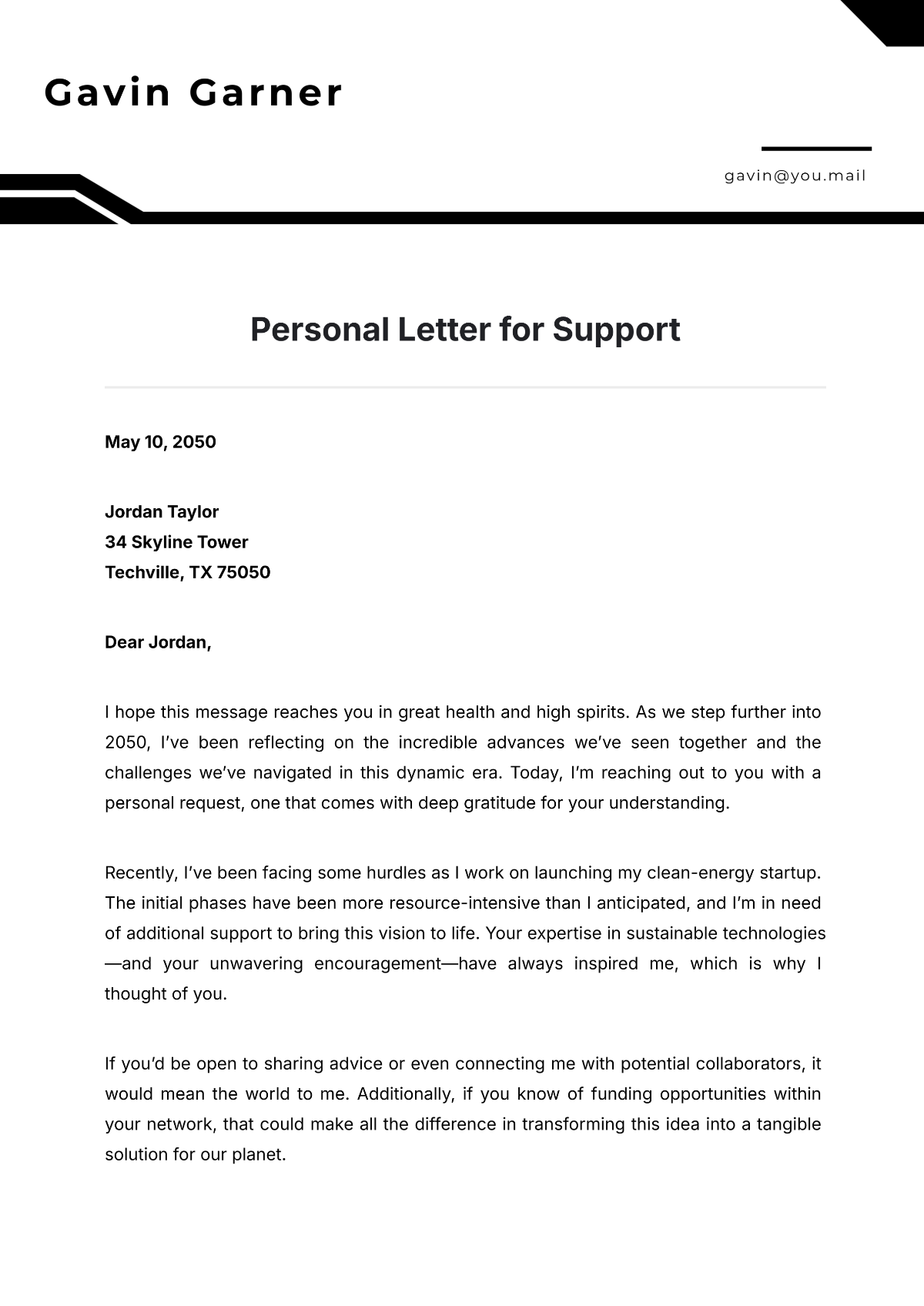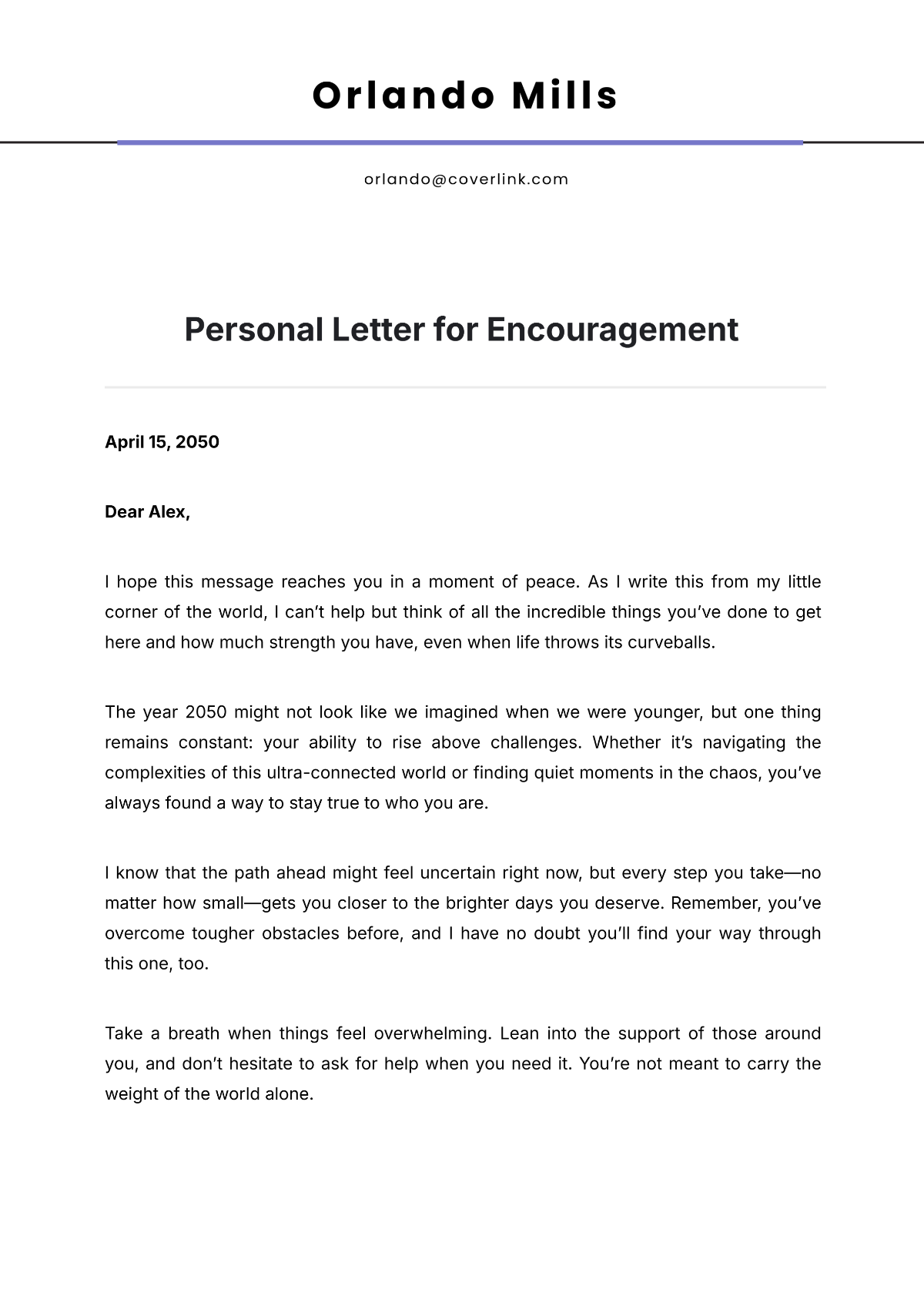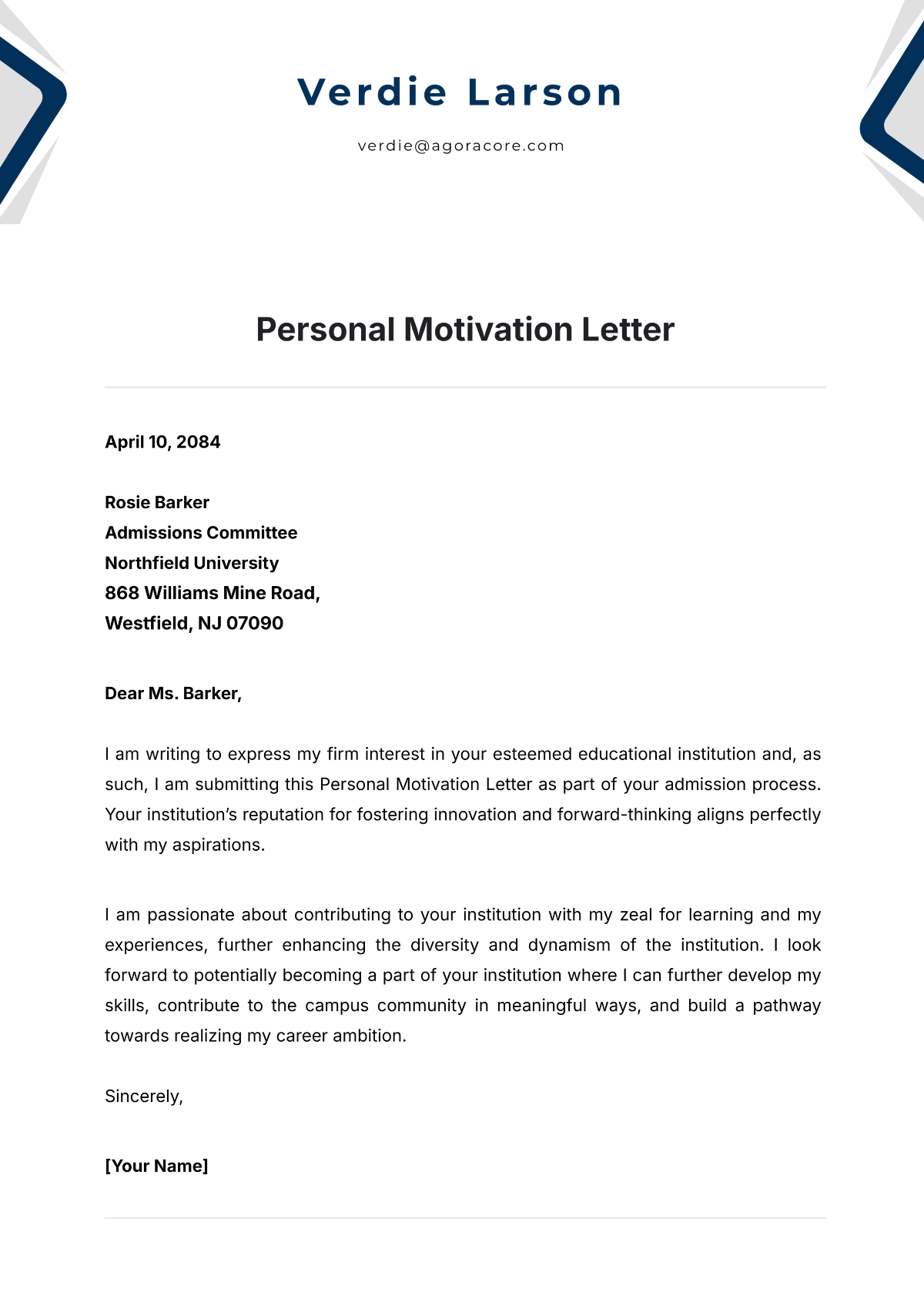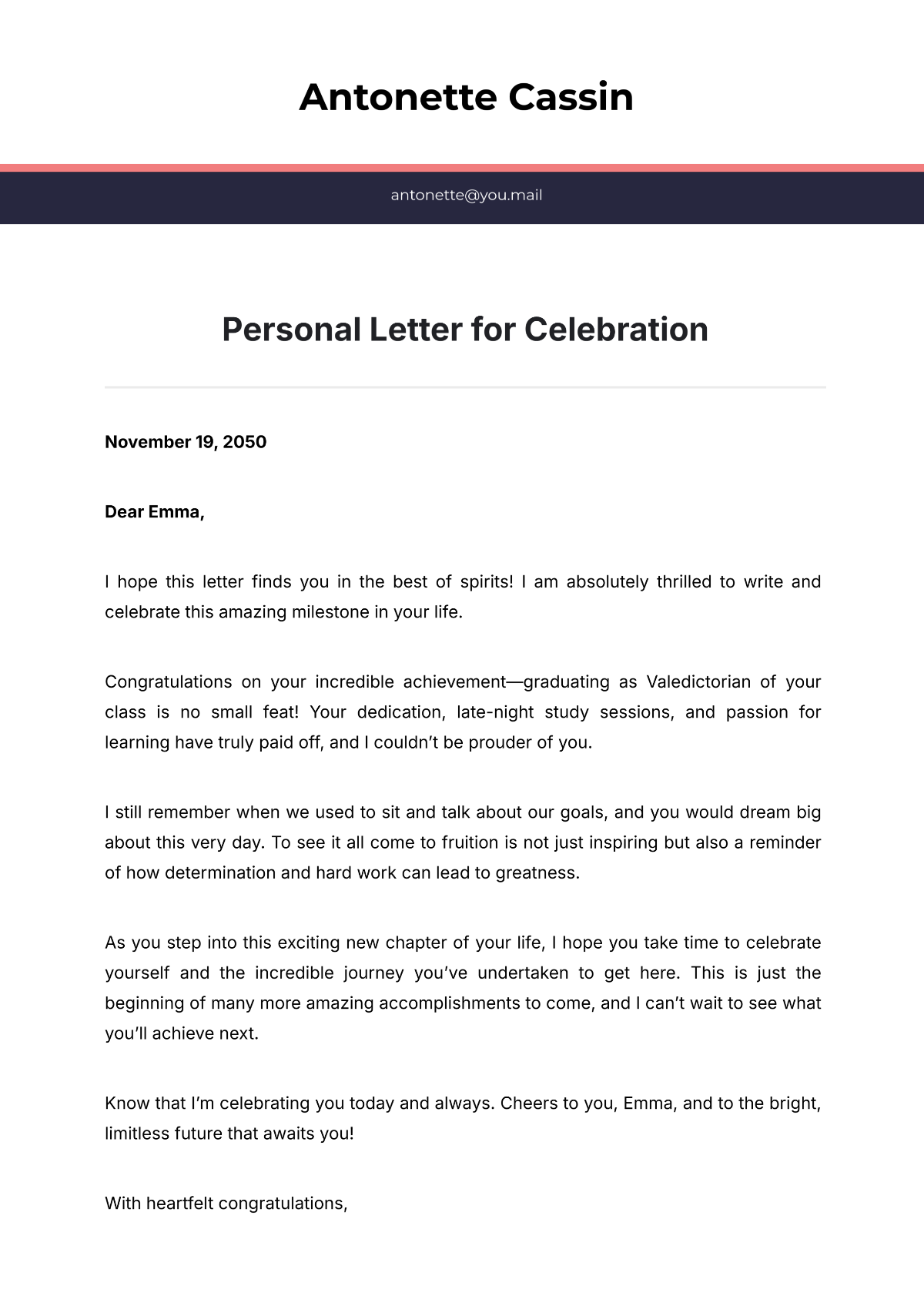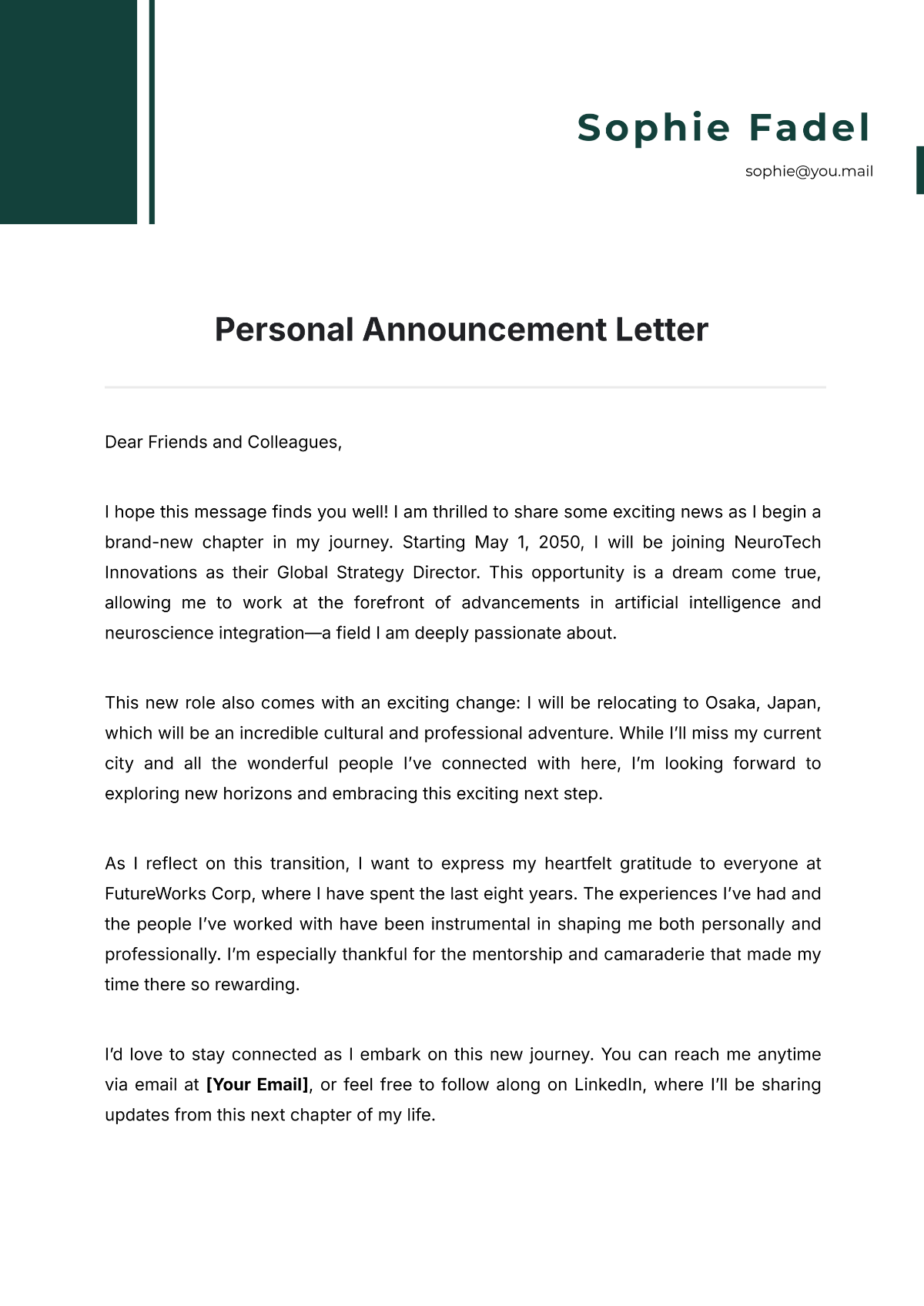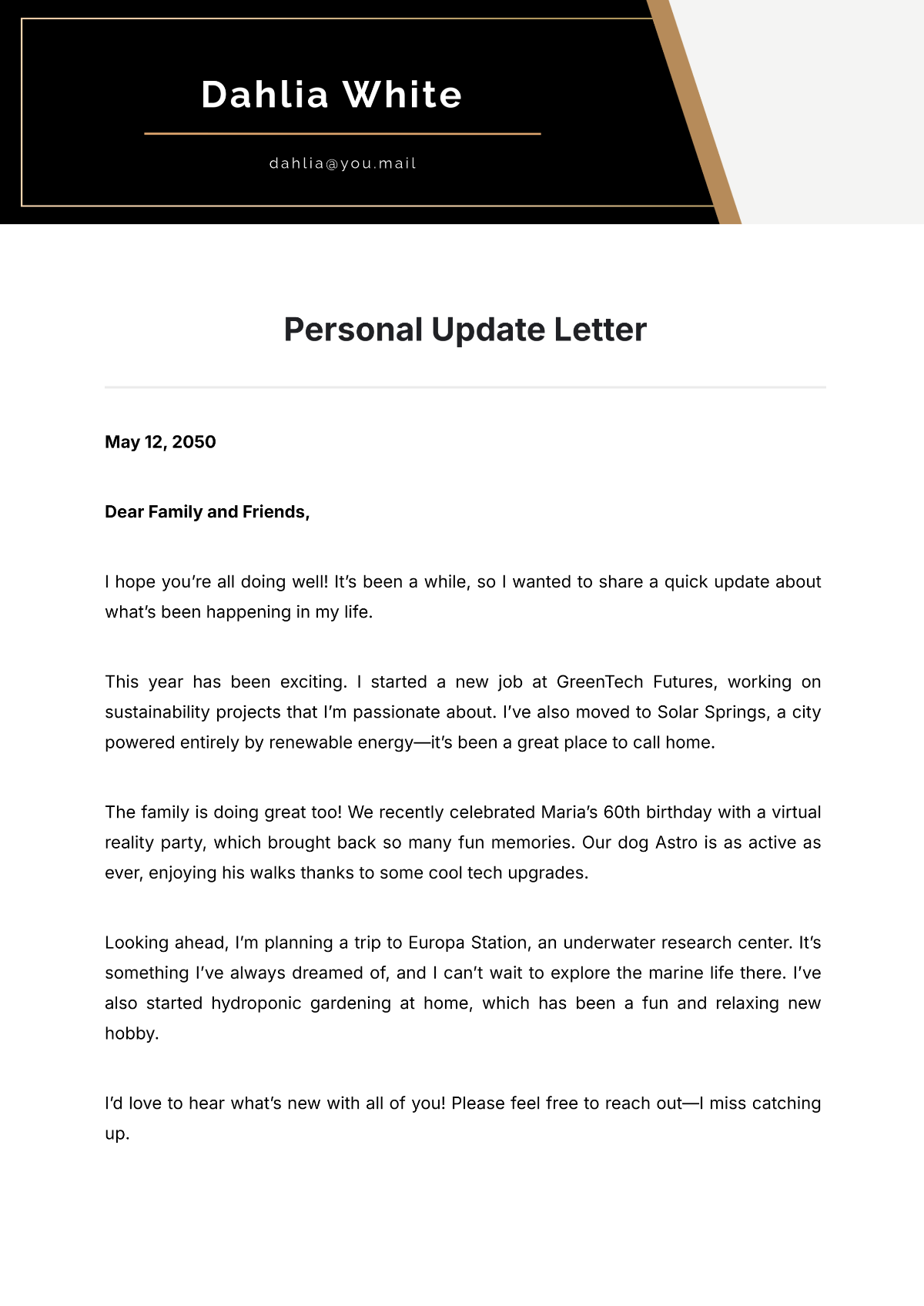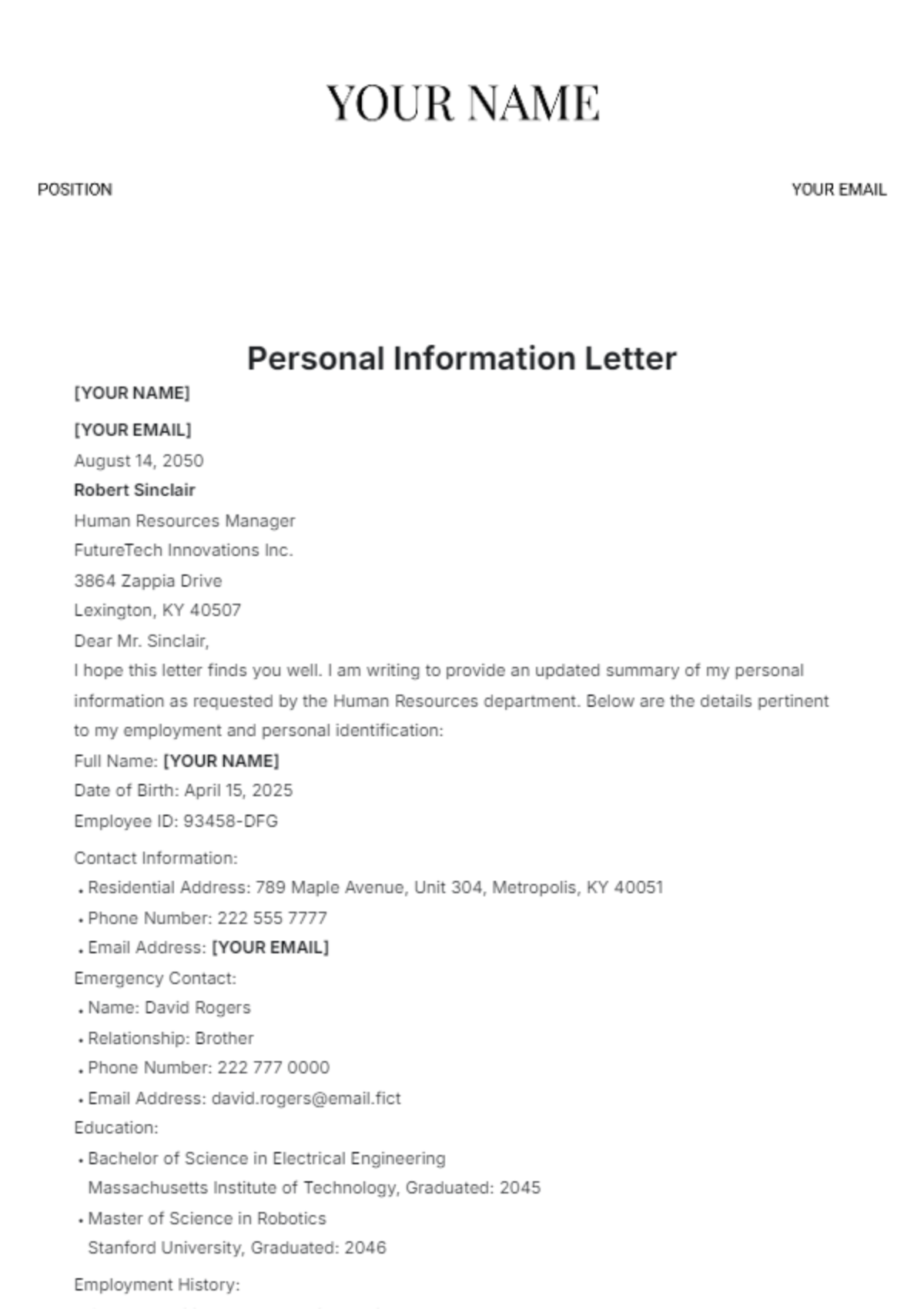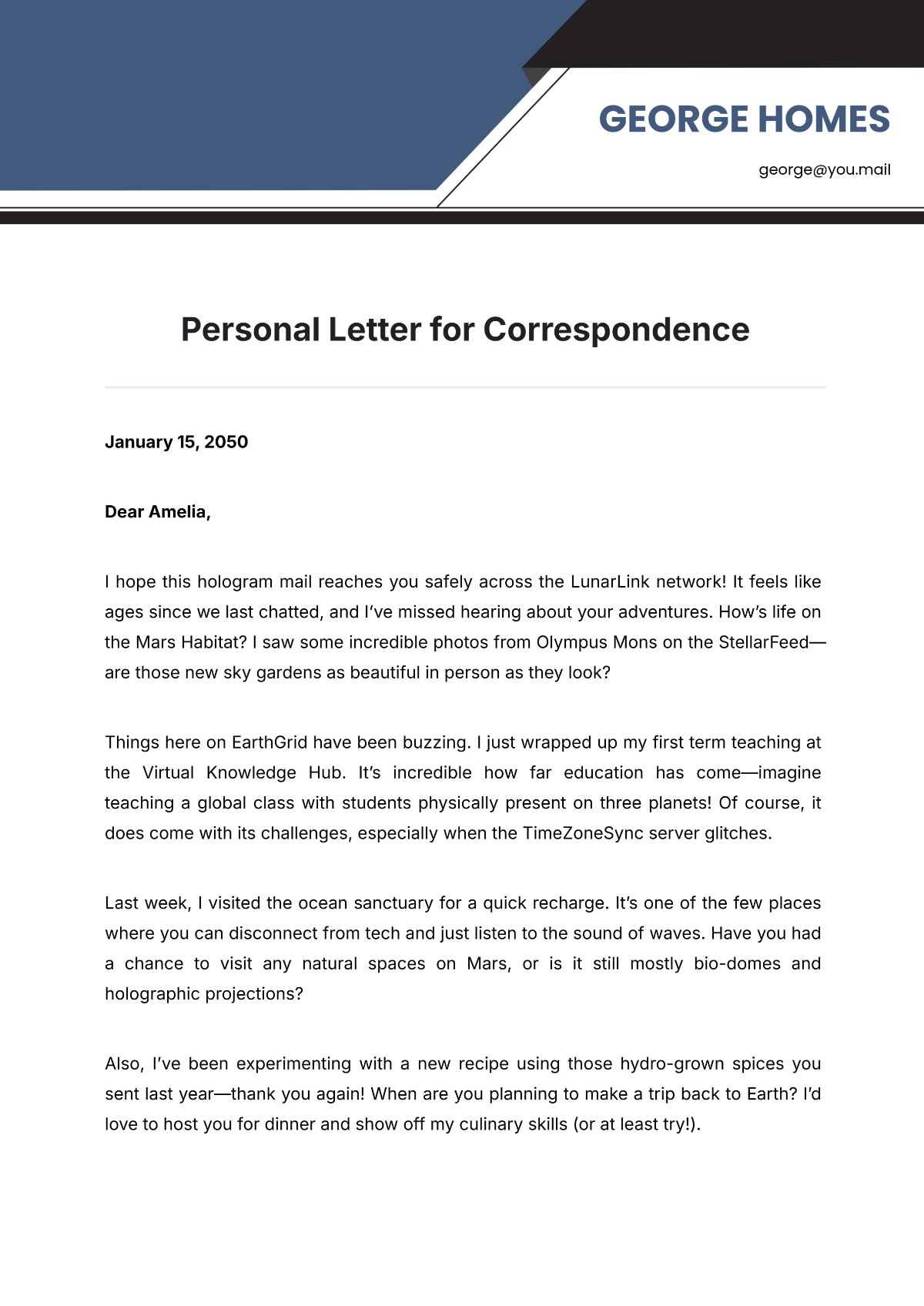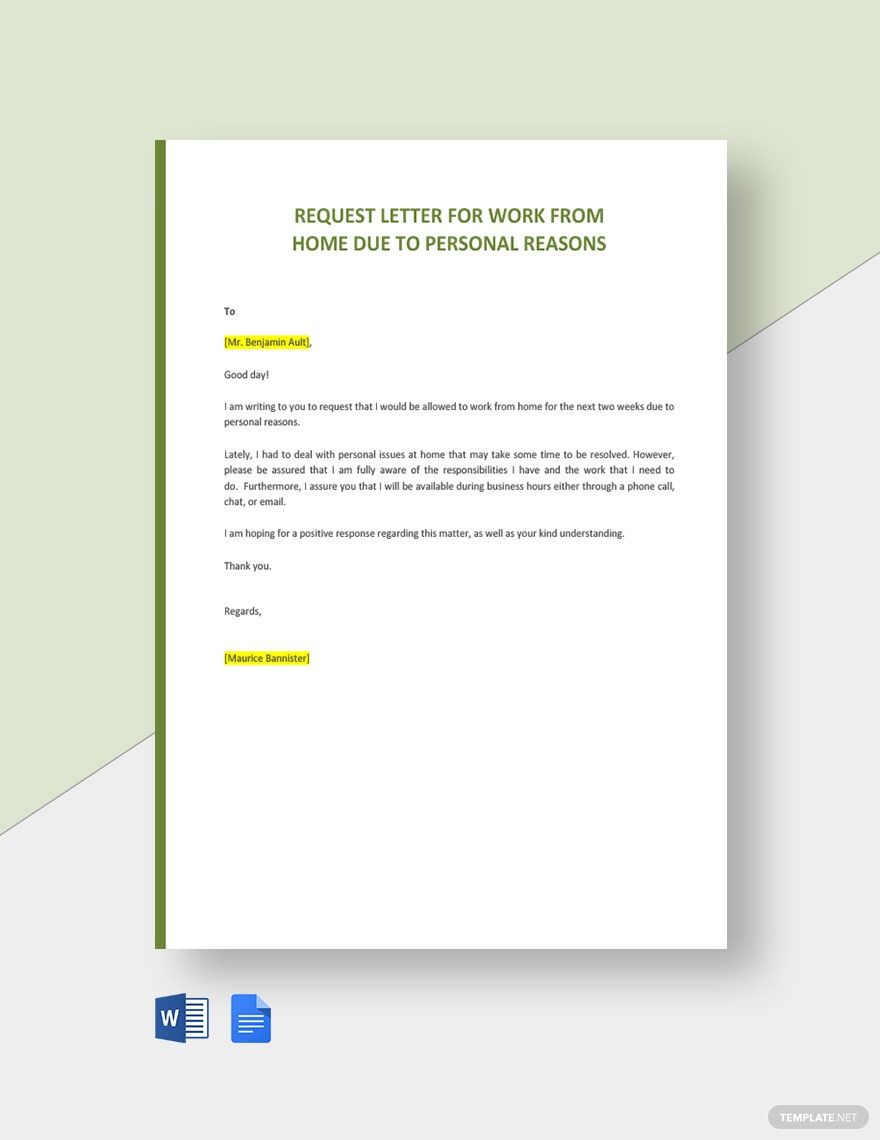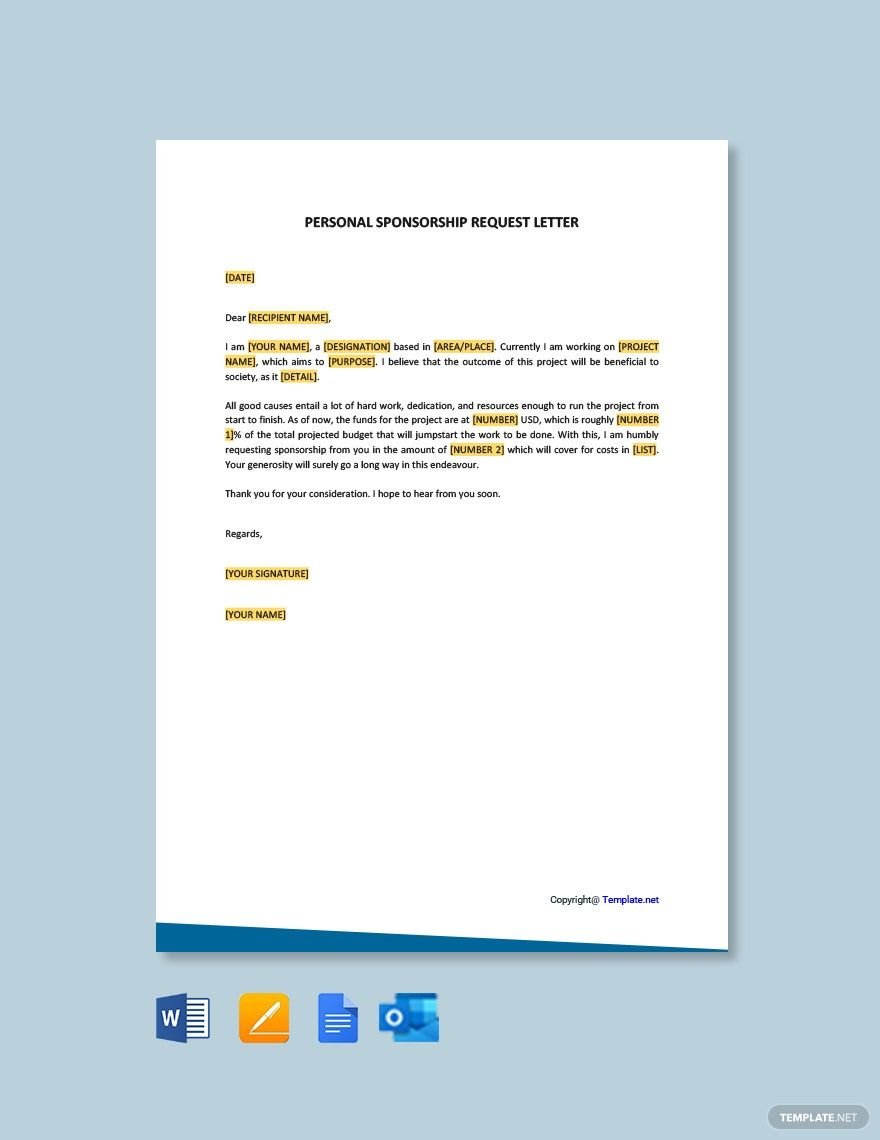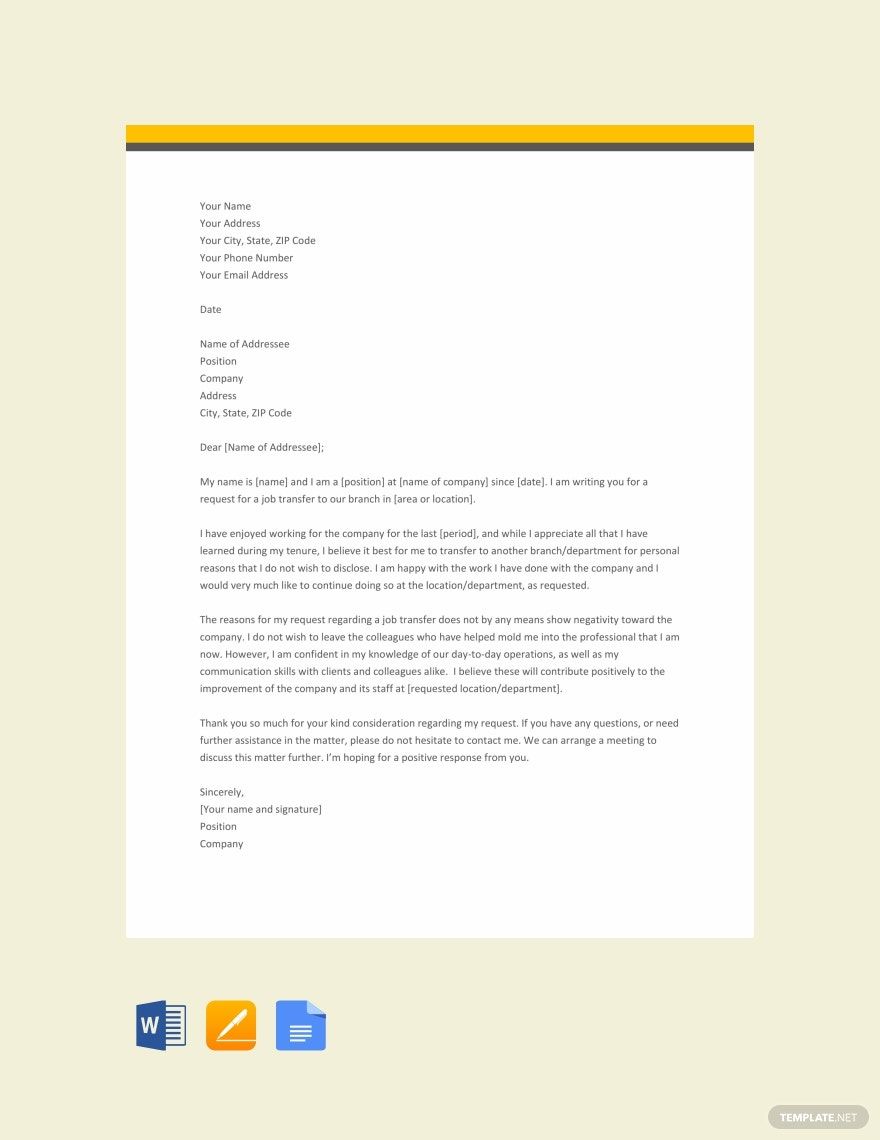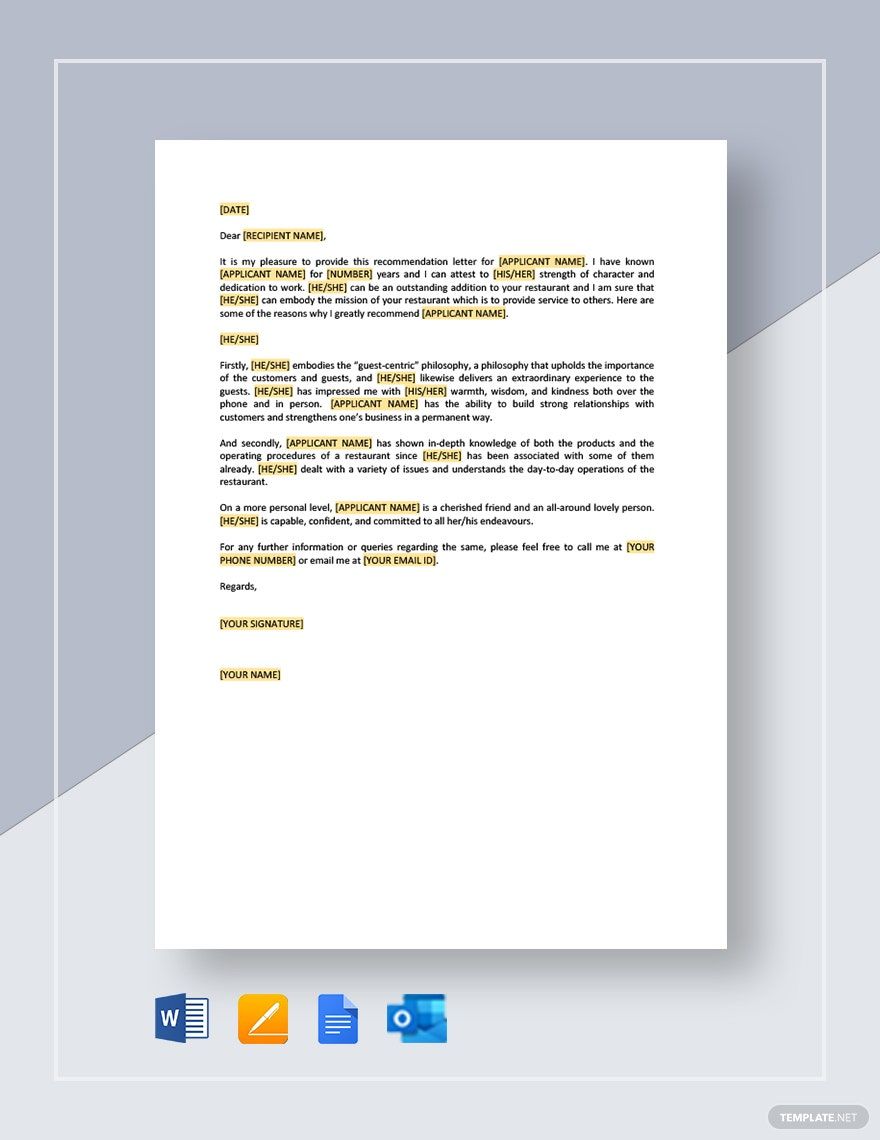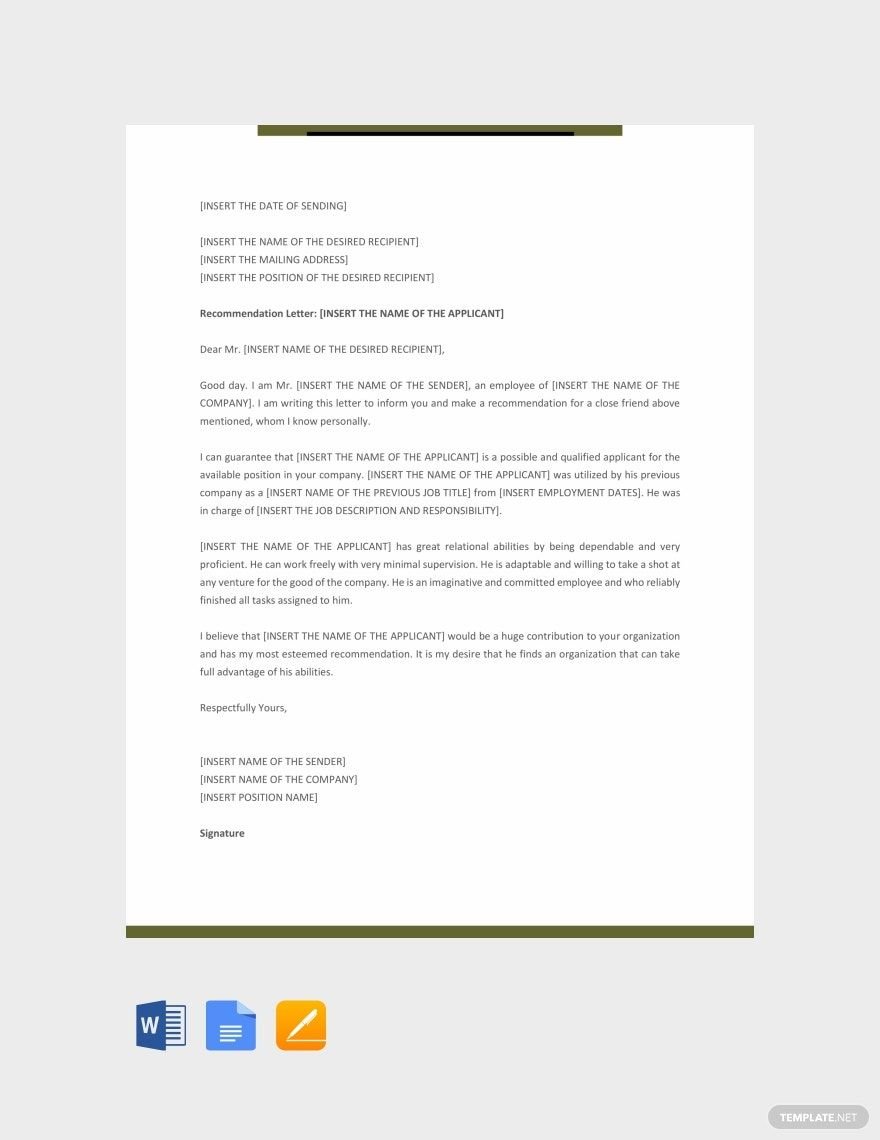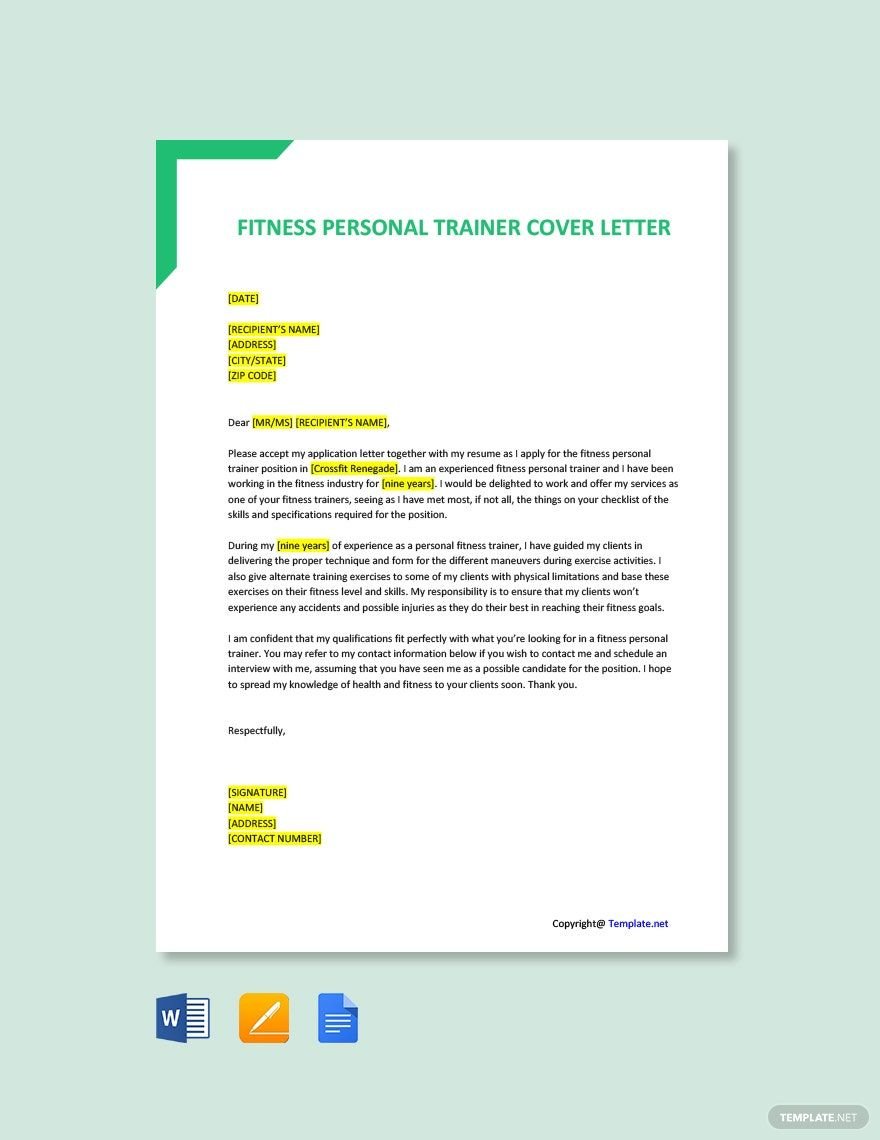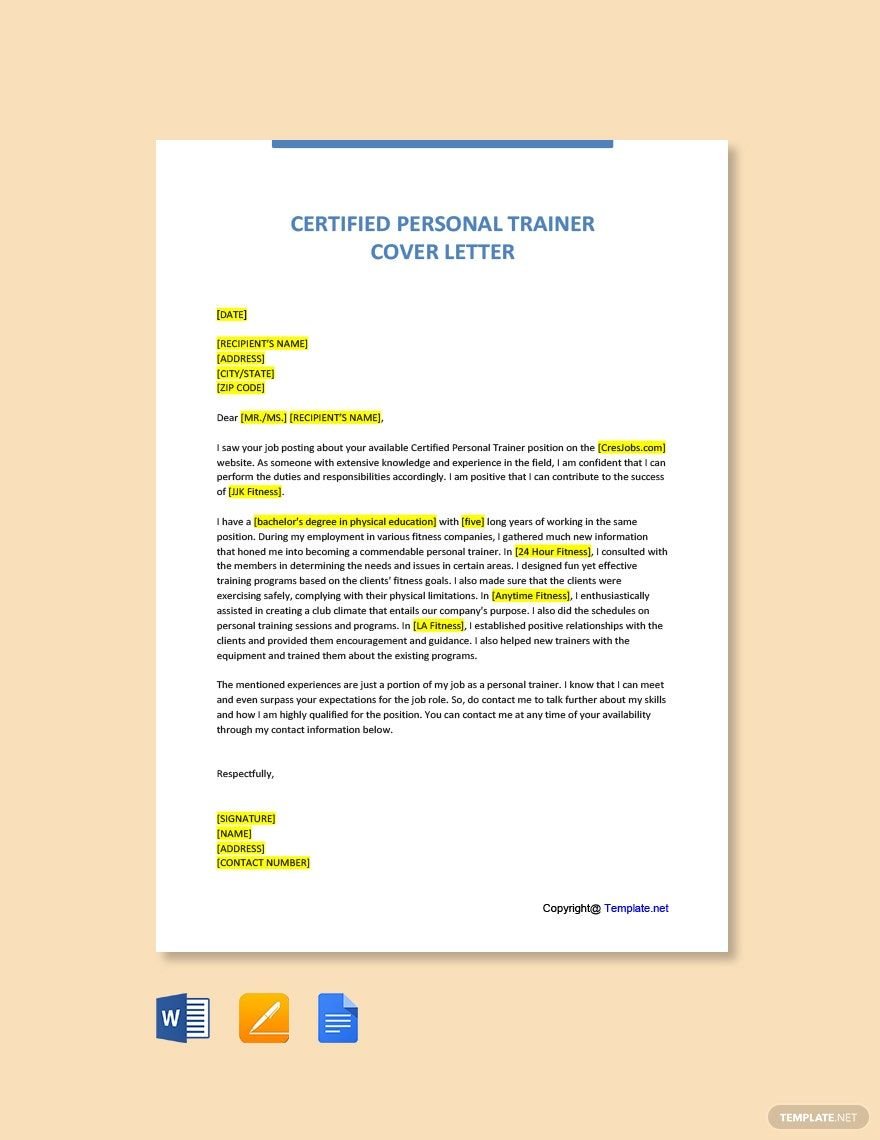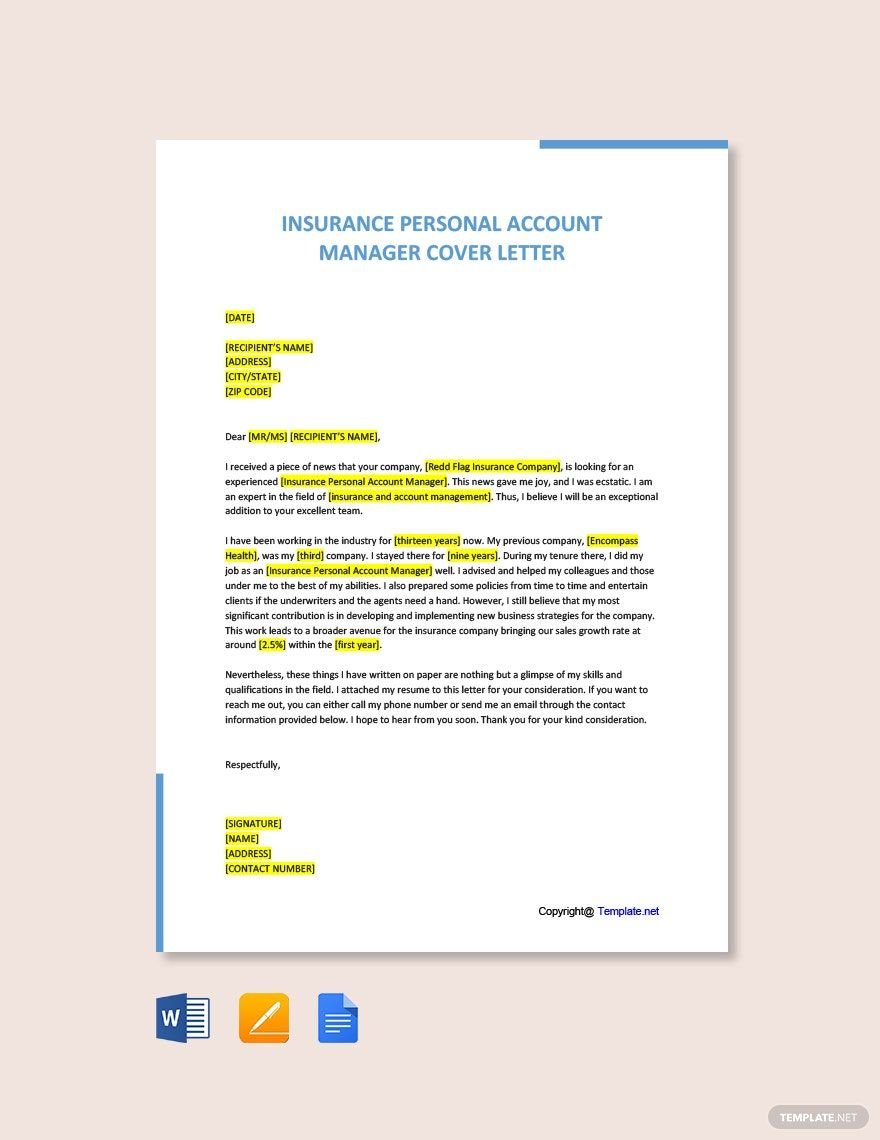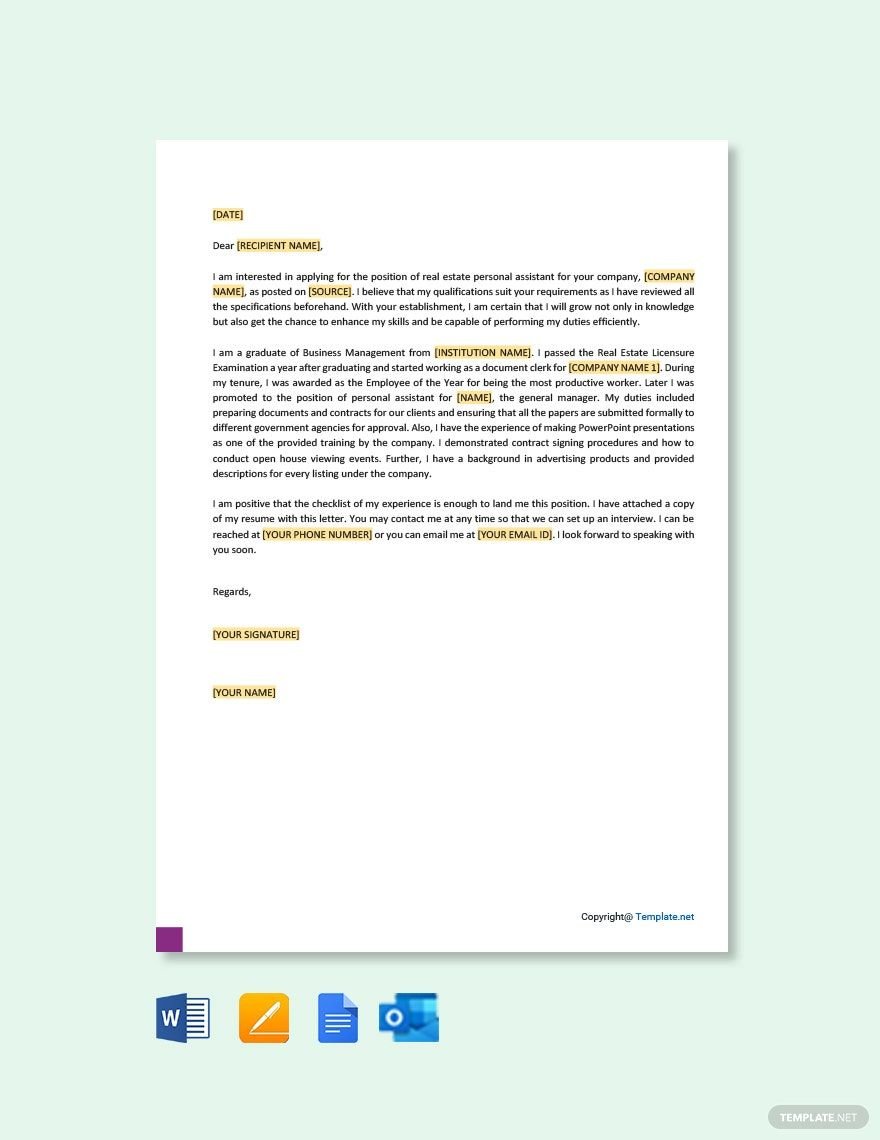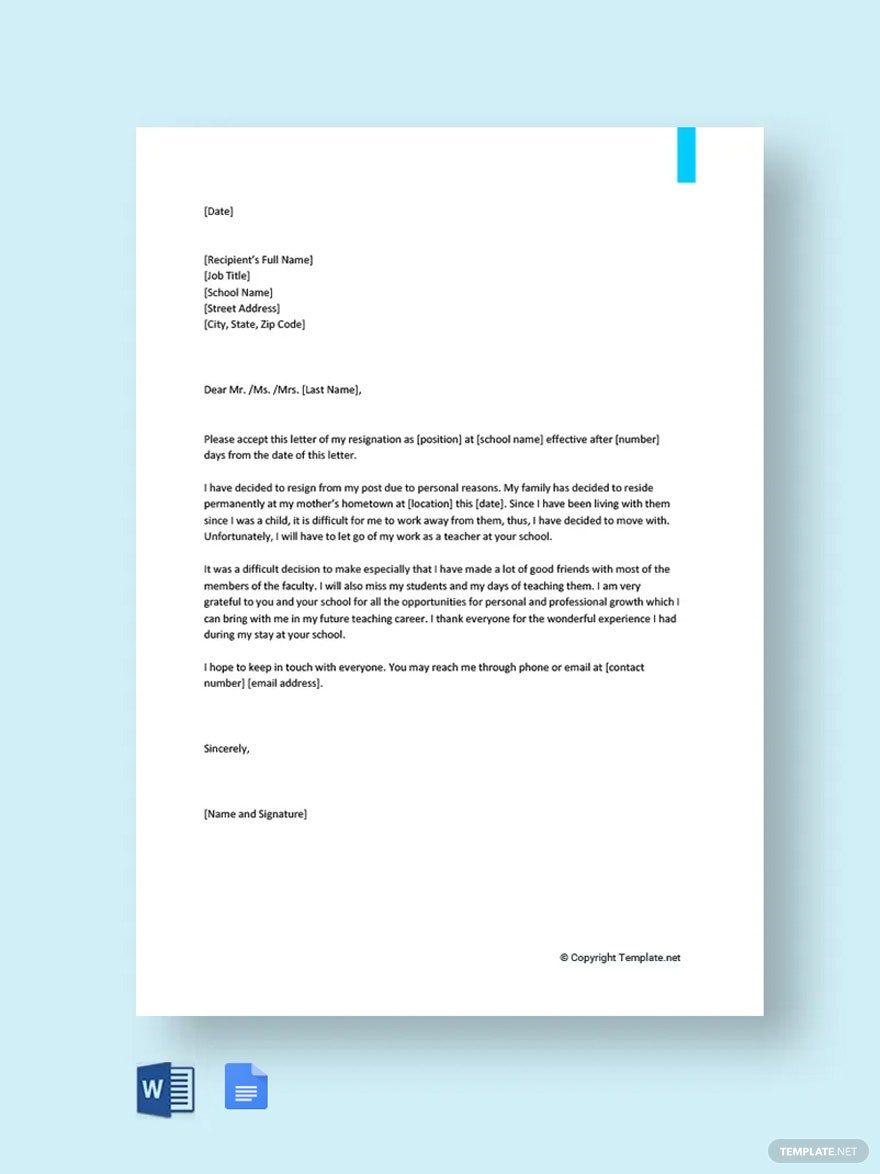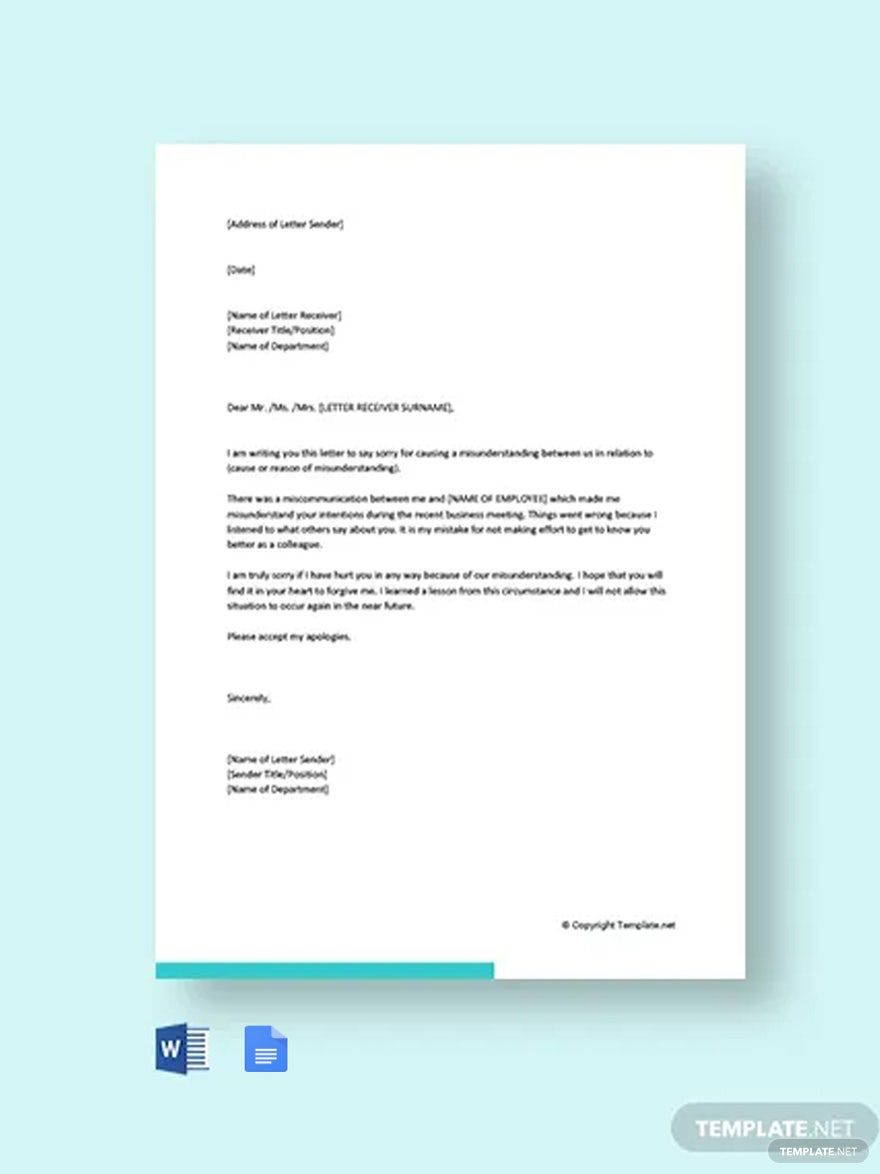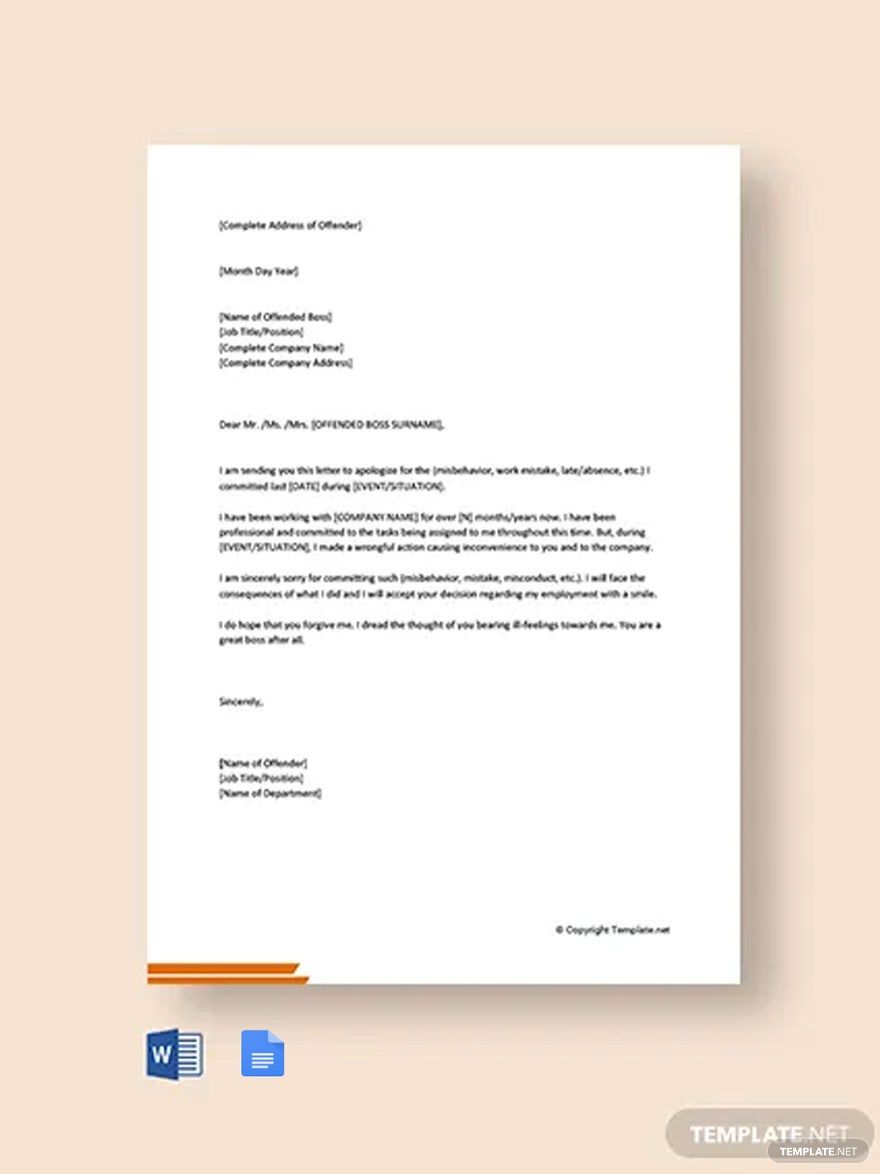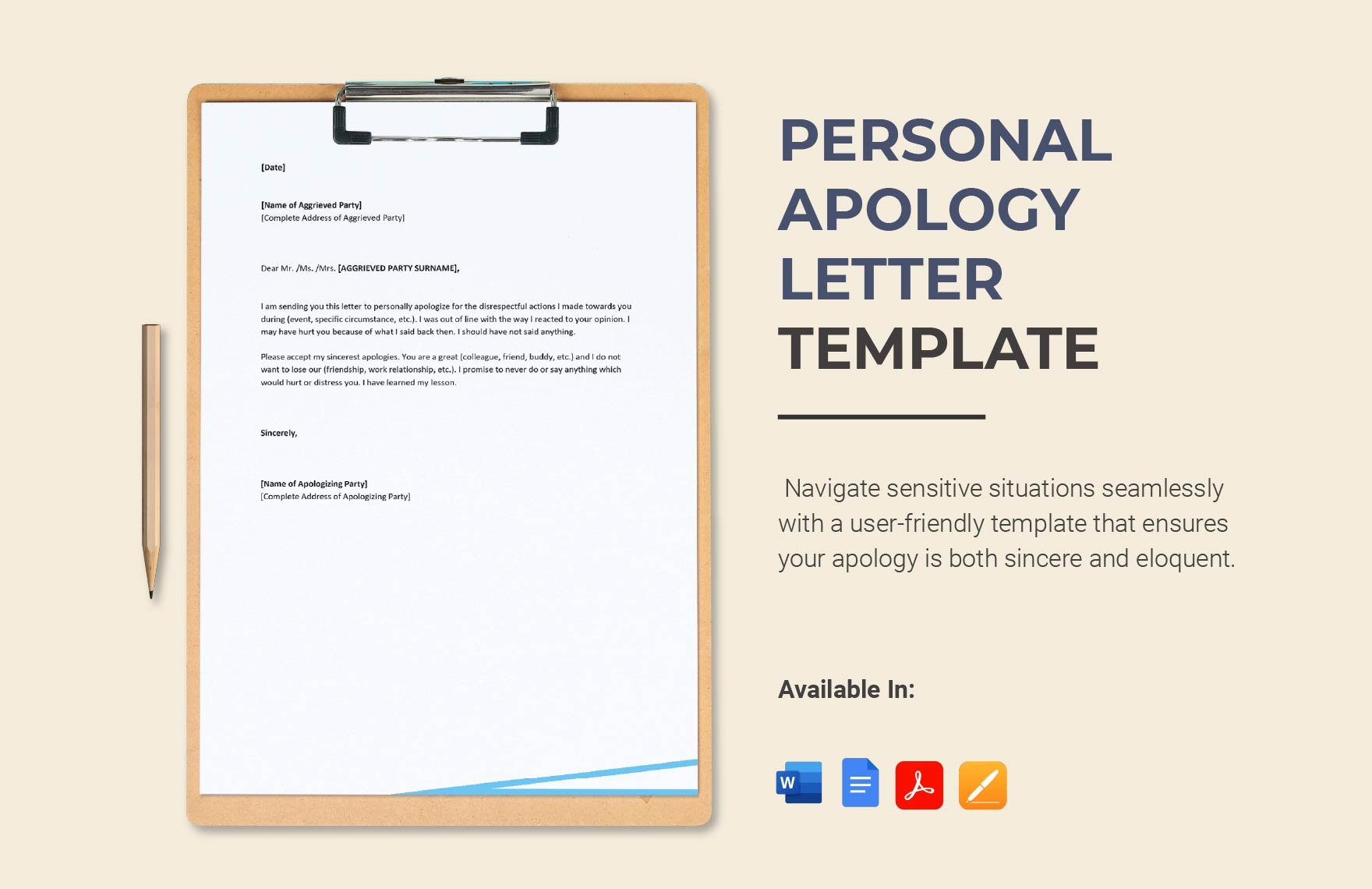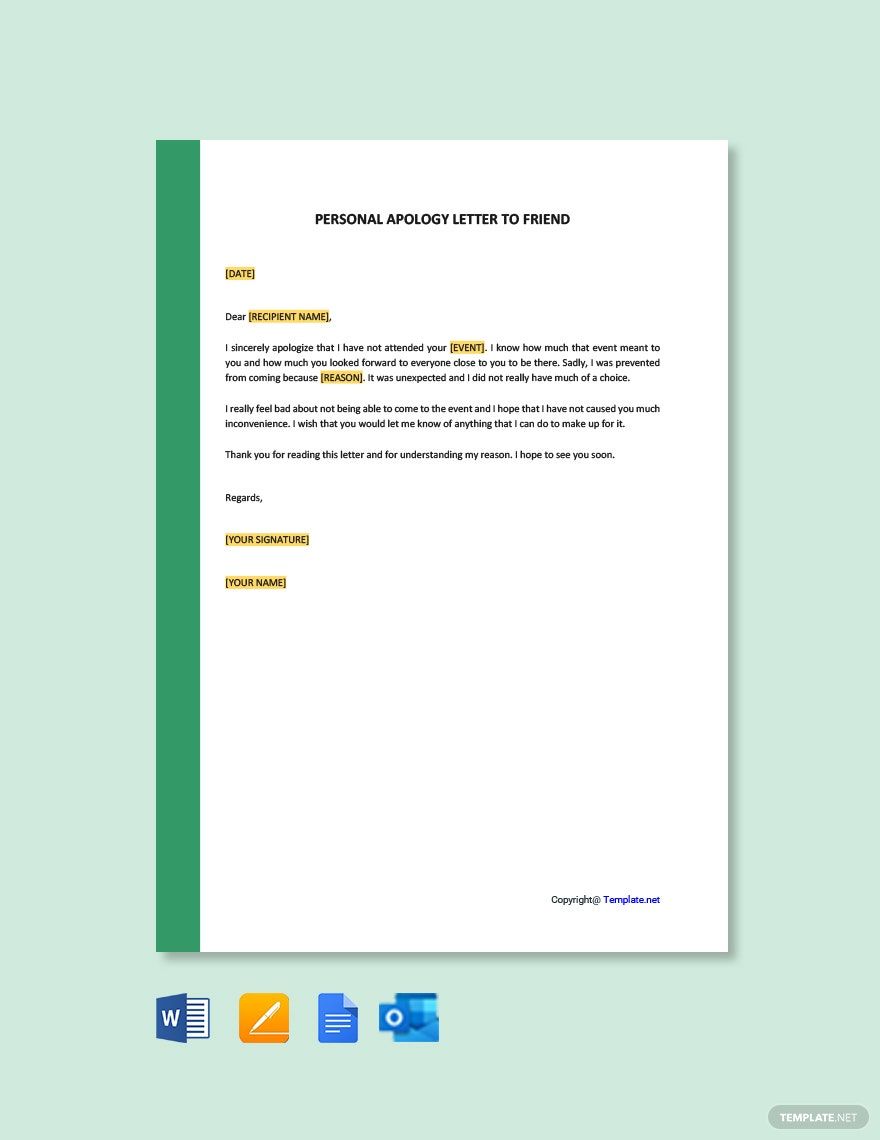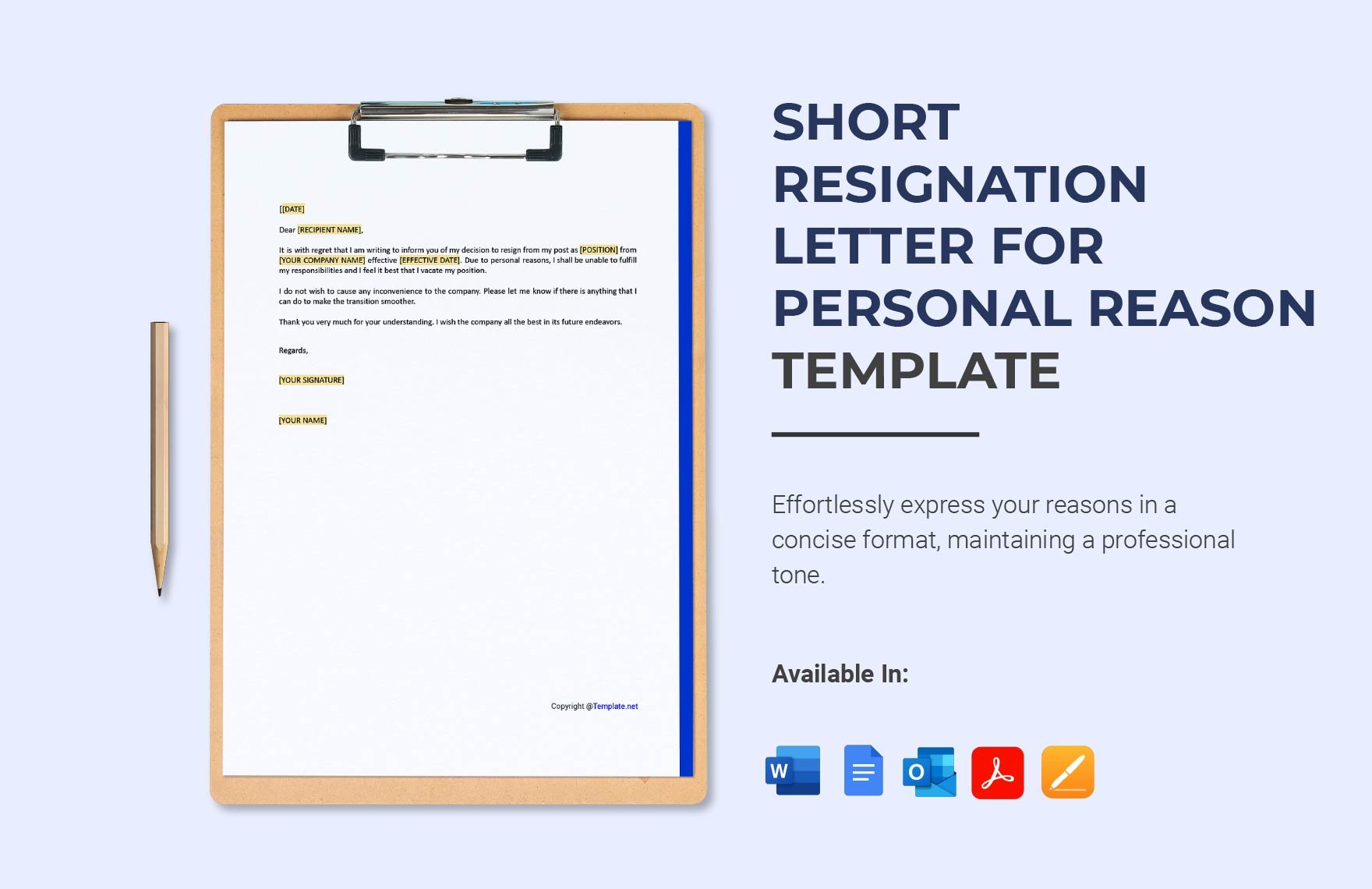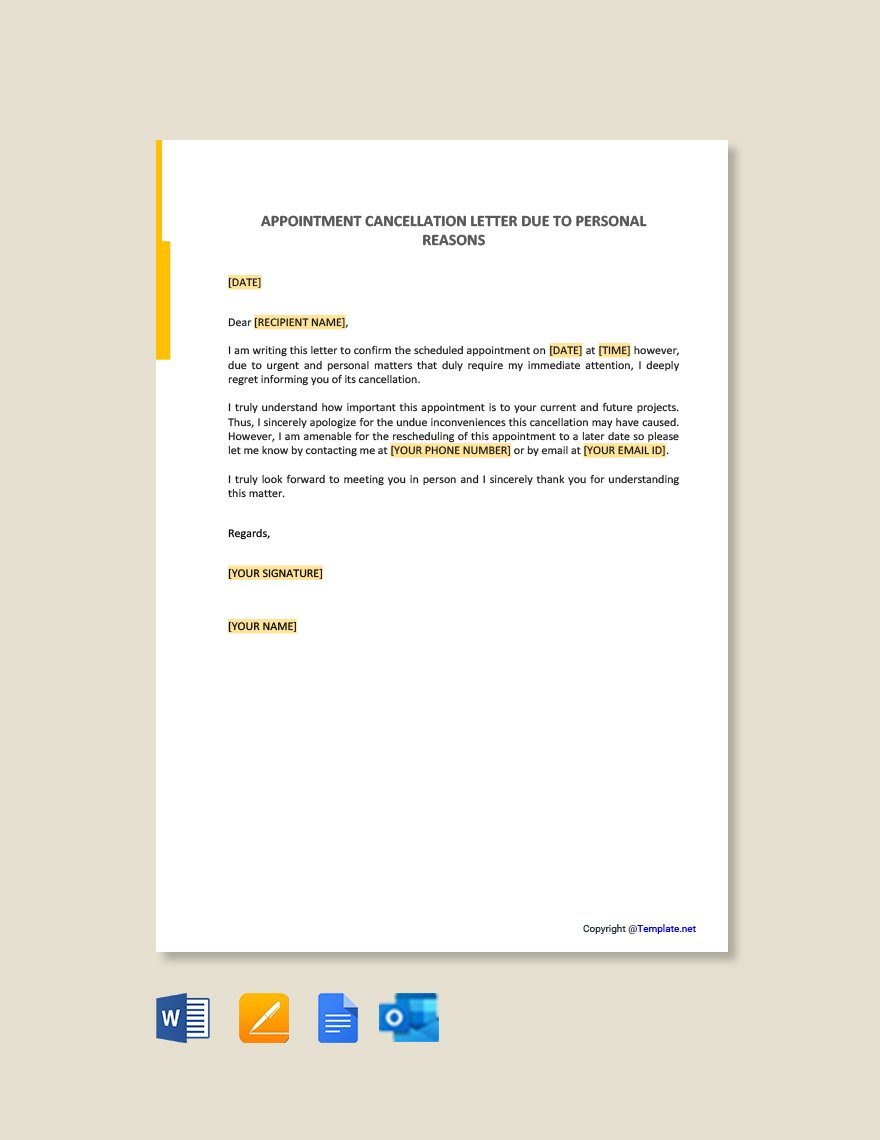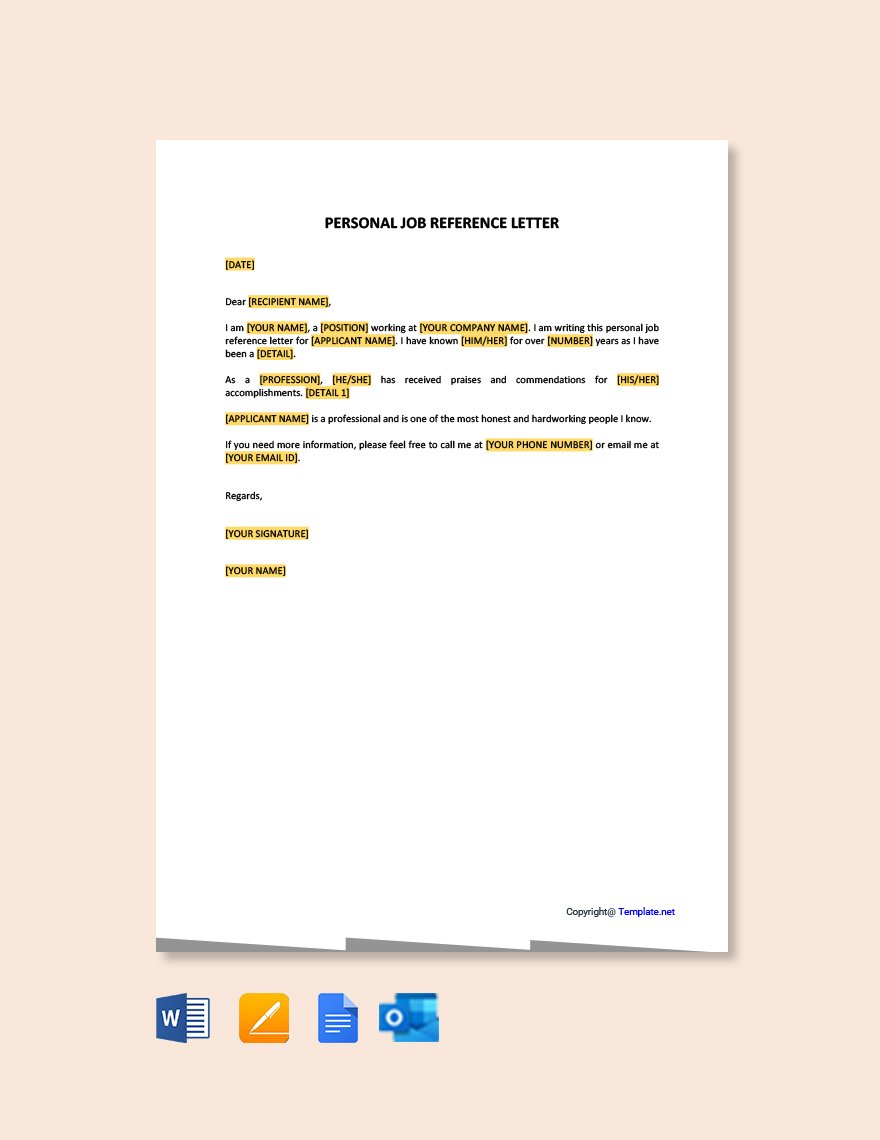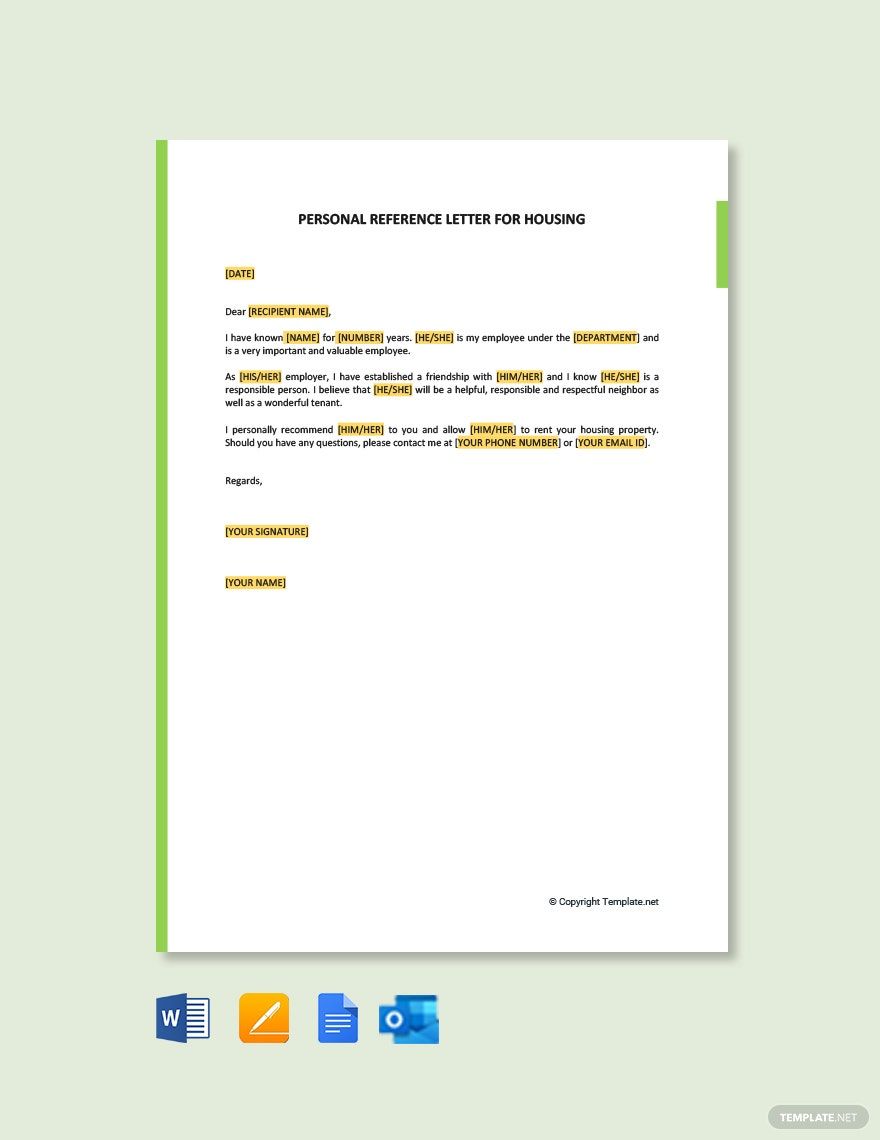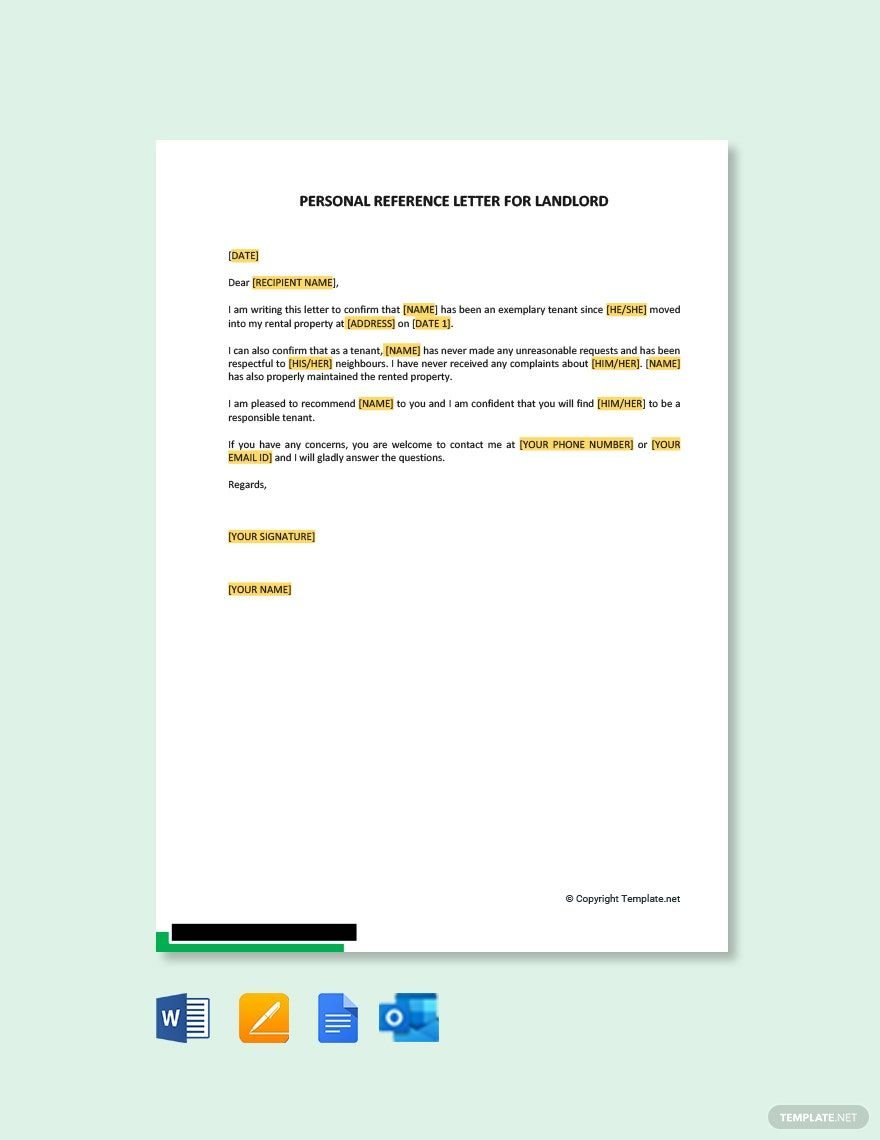Bring Your Personal Connection to Life with Personal Letter Templates from Template.net
Keep your personal relationships engaged, express your thoughts eloquently, and maintain a timeless touch with Personal Letter Templates from Template.net. Whether you're reestablishing old family bonds or sending out heartfelt thank-you notes, these templates offer beautifully crafted designs that are perfect for every occasion. Use them to announce exciting news like a family event or to provide an emotional touch to a message of gratitude. Each template includes customizable fields for details like time, date, and contact information, so you can make them uniquely yours. You don't need any design skills—our templates feature professional-grade designs, ready to download and personalize, ensuring both your ease and a touch of sophistication.
Discover the many Personal Letter Templates we have on hand, perfect for any personal note you wish to convey. Each template is easily customizable; select your desired layout, swap in your personal assets, and tweak colors and fonts to match your style. Add advanced touches by dragging and dropping icons or graphics, and even enhance your message with animated effects or AI-powered text tools. The possibilities are endless, and you can achieve impressive results without any design experience. Our library of templates is regularly updated, offering fresh and timely designs to keep your correspondence up to date. When you're finished, just download or share your personalized letter via print or email, making it ideal for use across multiple channels.
